- One of the best interiors in the segment
- Spacious and practical rear seat
- A big improvement over the last X-Trail
- Not thrilling to drive
- Short 10,000km service intervals
- Low speed ride quality could be improved
It’s no secret that the mid-size SUV segment is going gangbusters in Australia, as it has done since the early 2000s. It’s easy to see why: these cars are a good size, practical, well priced, feature good safety equipment, reasonable performance and fuel economy and no shortage of choice so that even the most brand loyal buyers are well covered for. So far in 2023, over 80,000 medium SUVs have been sold, so how do you choose one from the seemingly endless litter? Enter the 2023 Nissan X-Trail ST-L.
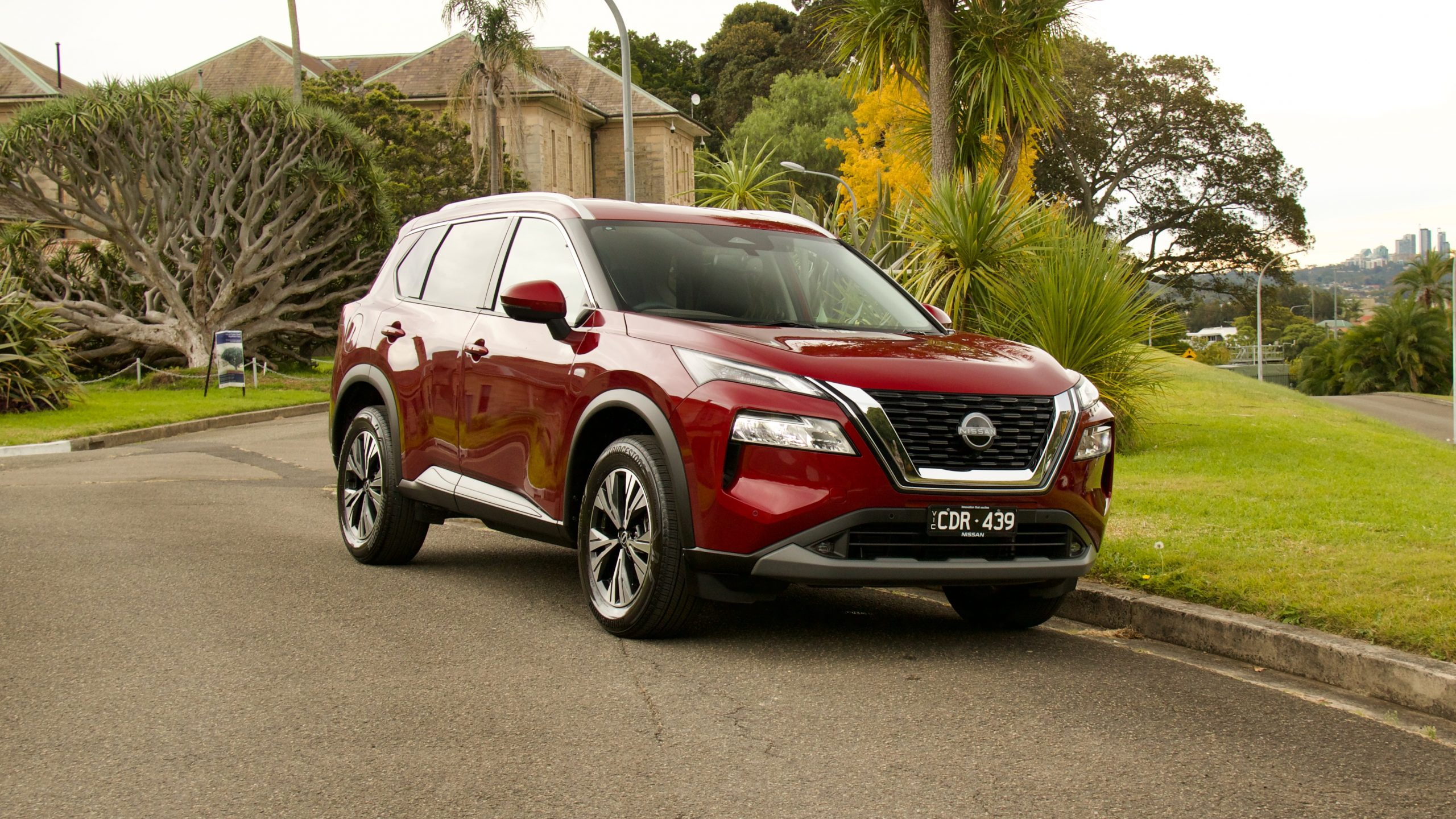
The X-Trail was launched in Australia in 2001, and while it wasn’t one of the original mid-size SUVs on the market, it came with the next wave and joined cars like the Mitsubishi Outlander locally. The first few X-Trails were somewhat off-road themed with chunky styling and multi-mode all-wheel drive systems – though, the third-generation car was decidedly more on-road focused. The new model represents a big step forward for Nissan, but what sets the X-Trail apart in today’s market? Let’s find out.
Price & Equipment: 8/10
Priced from $43,190 plus on-road costs (around $47,000 drive away), the 2023 Nissan X-Trail ST-L 2WD is the second model up from the base ST. The ST-L is currently available in five-seat/front-wheel drive petrol, seven-seat/all-wheel drive petrol and five-seat/all-wheel drive hybrid forms.
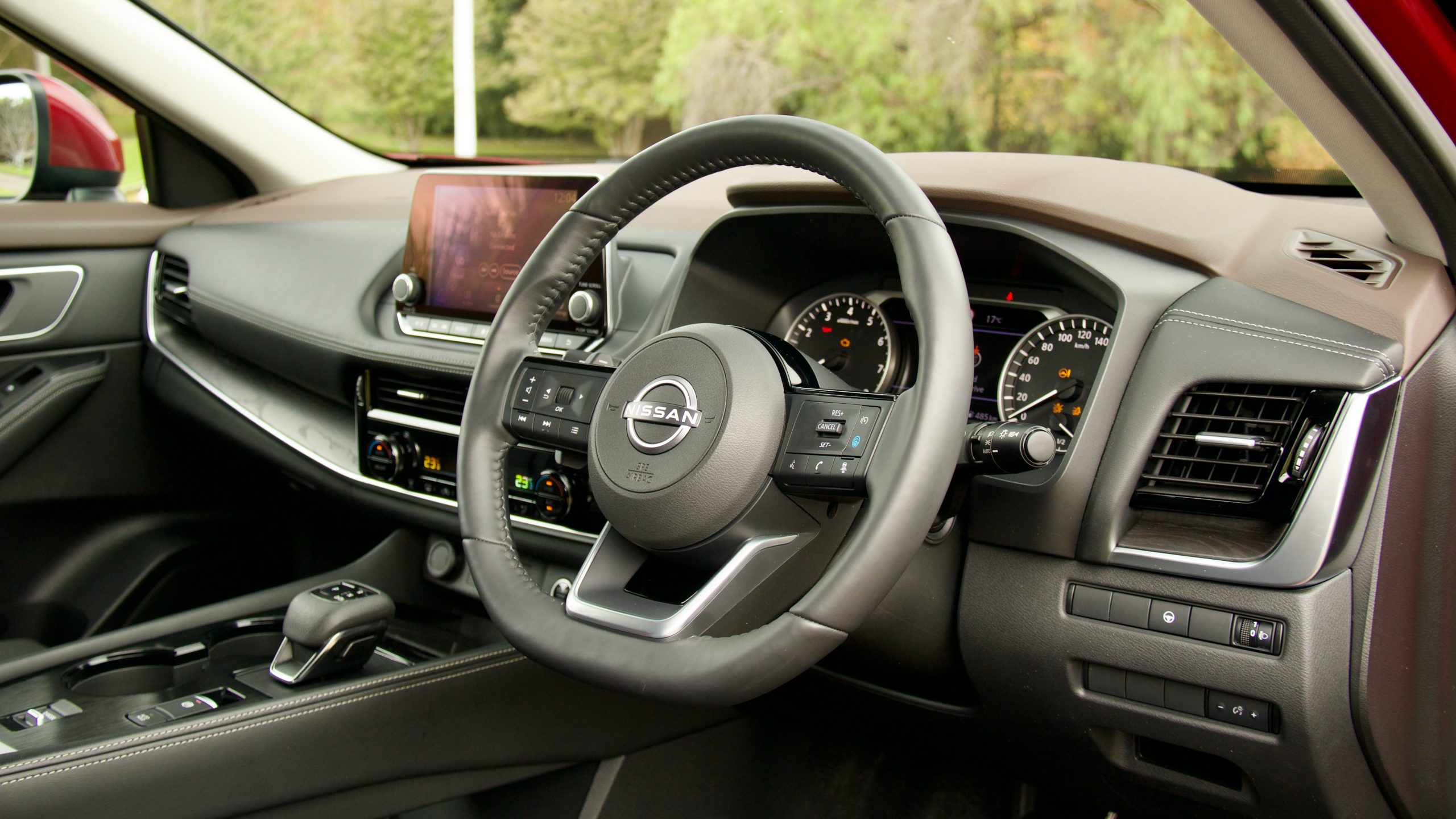
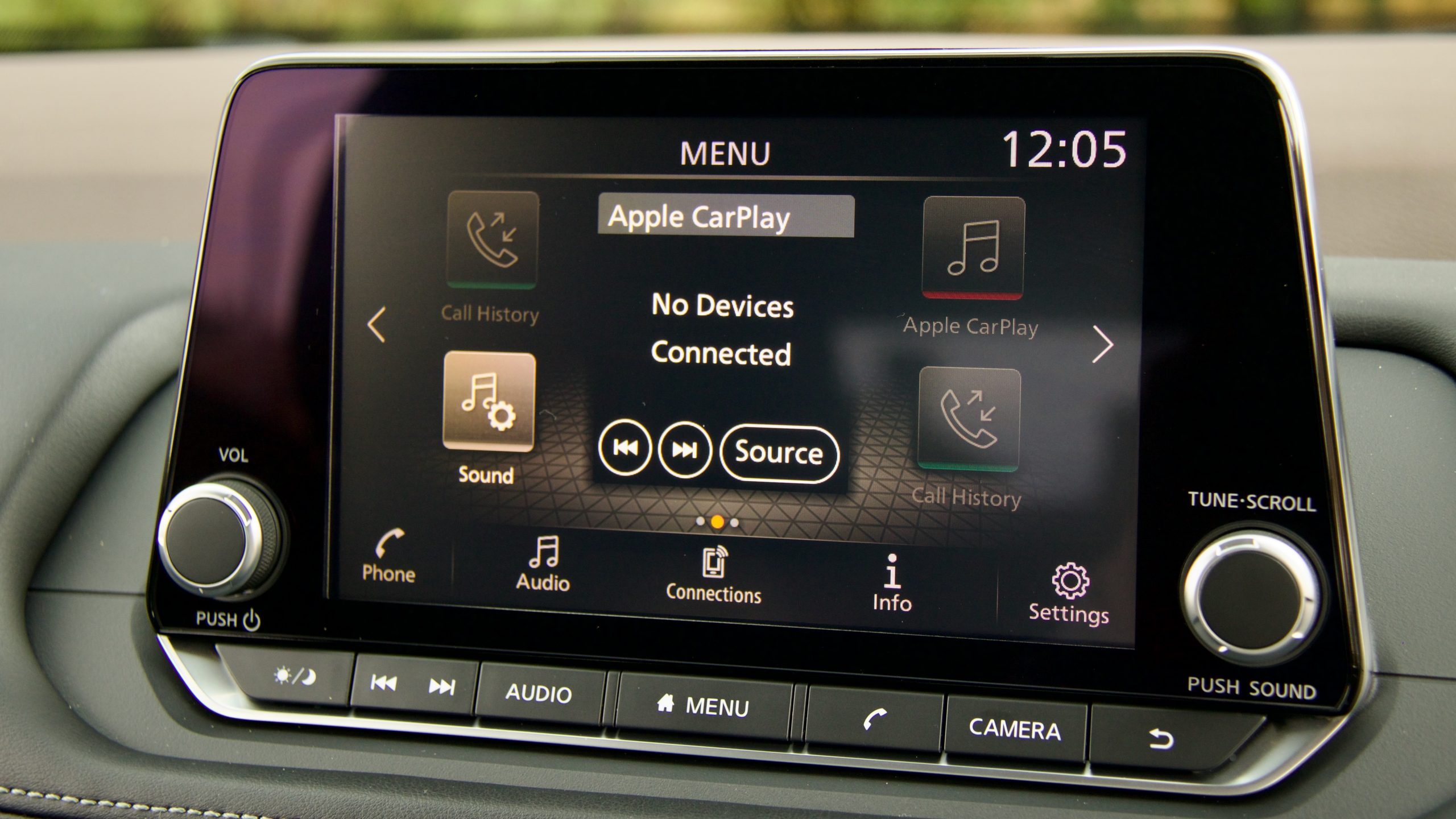
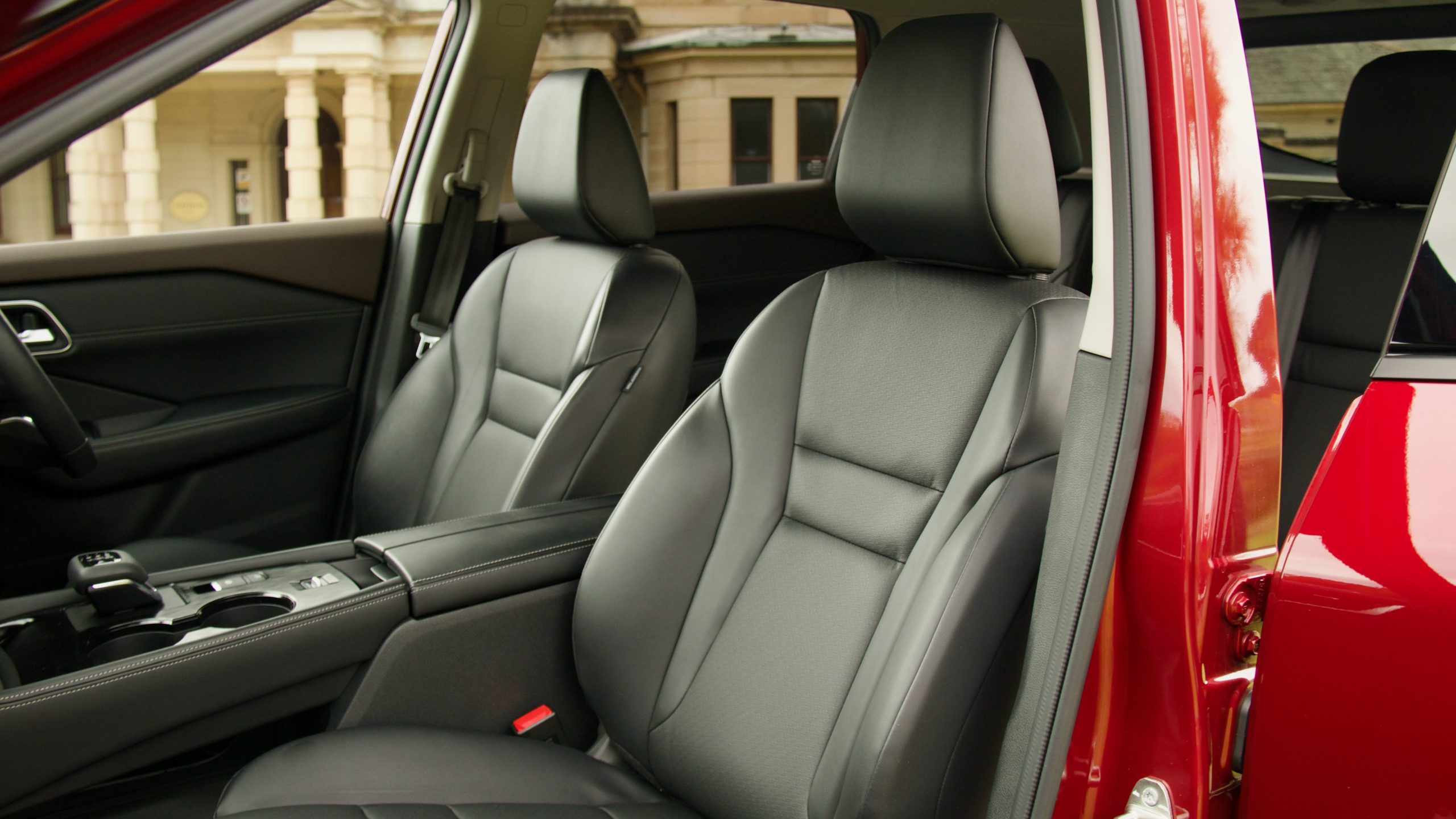
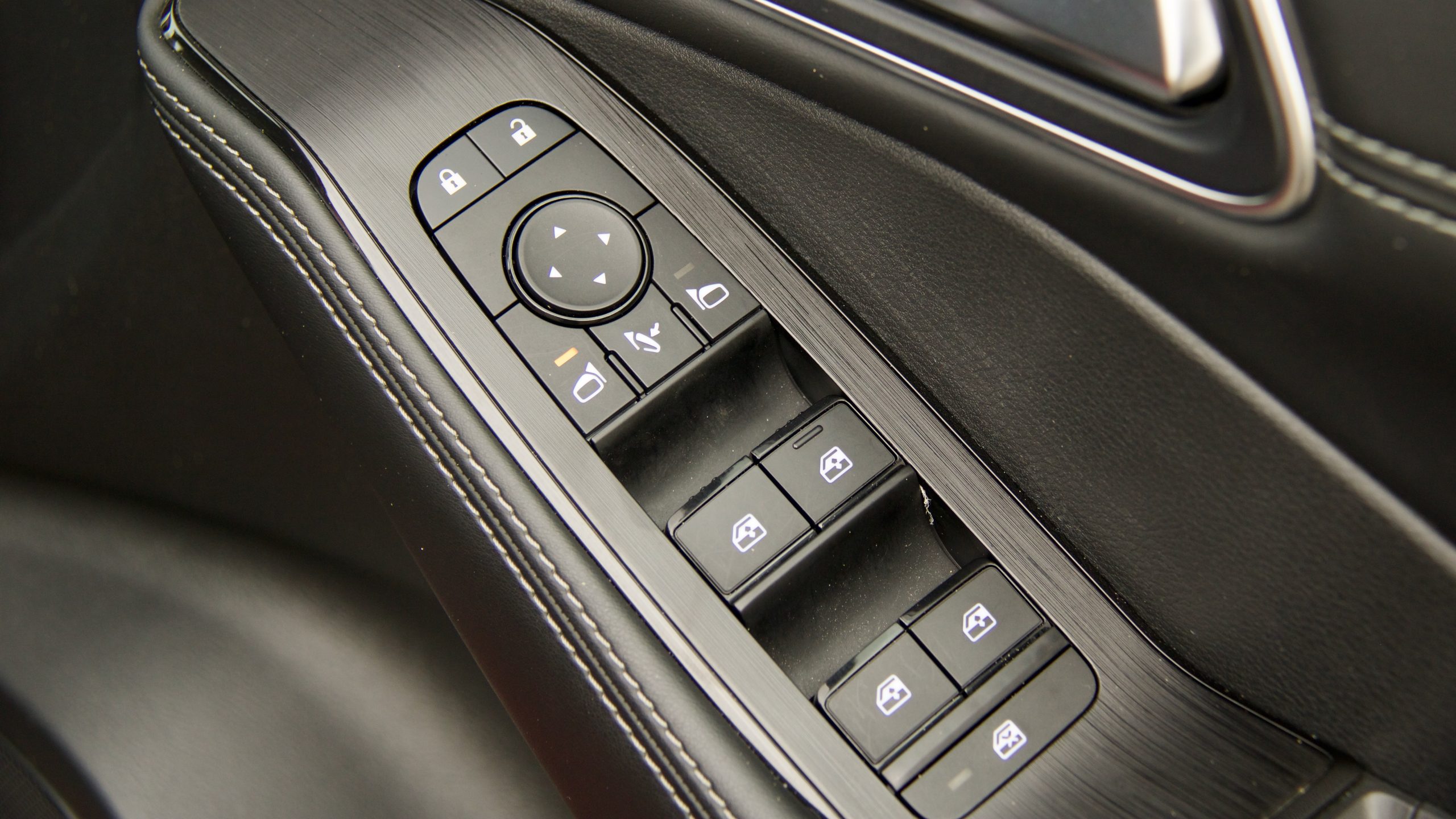
Standard equipment on the ST-L includes 18-inch alloy wheels, dusk-sensing LED exterior lighting with LED front fog lights, silver roof rails, rear privacy glass, synthetic leather upholstery, a 10-way electrically adjustable driver’s seat, heated front seats, a leather steering wheel, dual-zone climate control with rear vents, keyless entry and start, heated and auto-folding mirrors, an 8.0-inch touchscreen with wired Apple CarPlay and Android Auto, digital radio, a six-speaker sound system, four USB ports, Nissan’s ‘Divide-N-Hide’ cargo management system and 40:20:40-split rear seats with a rear centre armrest.
Safety kit includes seven airbags, auto emergency braking (AEB) with pedestrian, cyclist and intersection detection, adaptive cruise control with stop and go functionality, lane keep assist with lane trace assist, blind-spot monitoring with rear cross-traffic alert, moving object detection, auto high beam, driver attention alert, rear occupant alert, speed sign recognition, automatic low-speed rear braking, front and rear parking sensors and a 360-degree camera. The X-Trail earned a five-star ANCAP rating in November 2022.
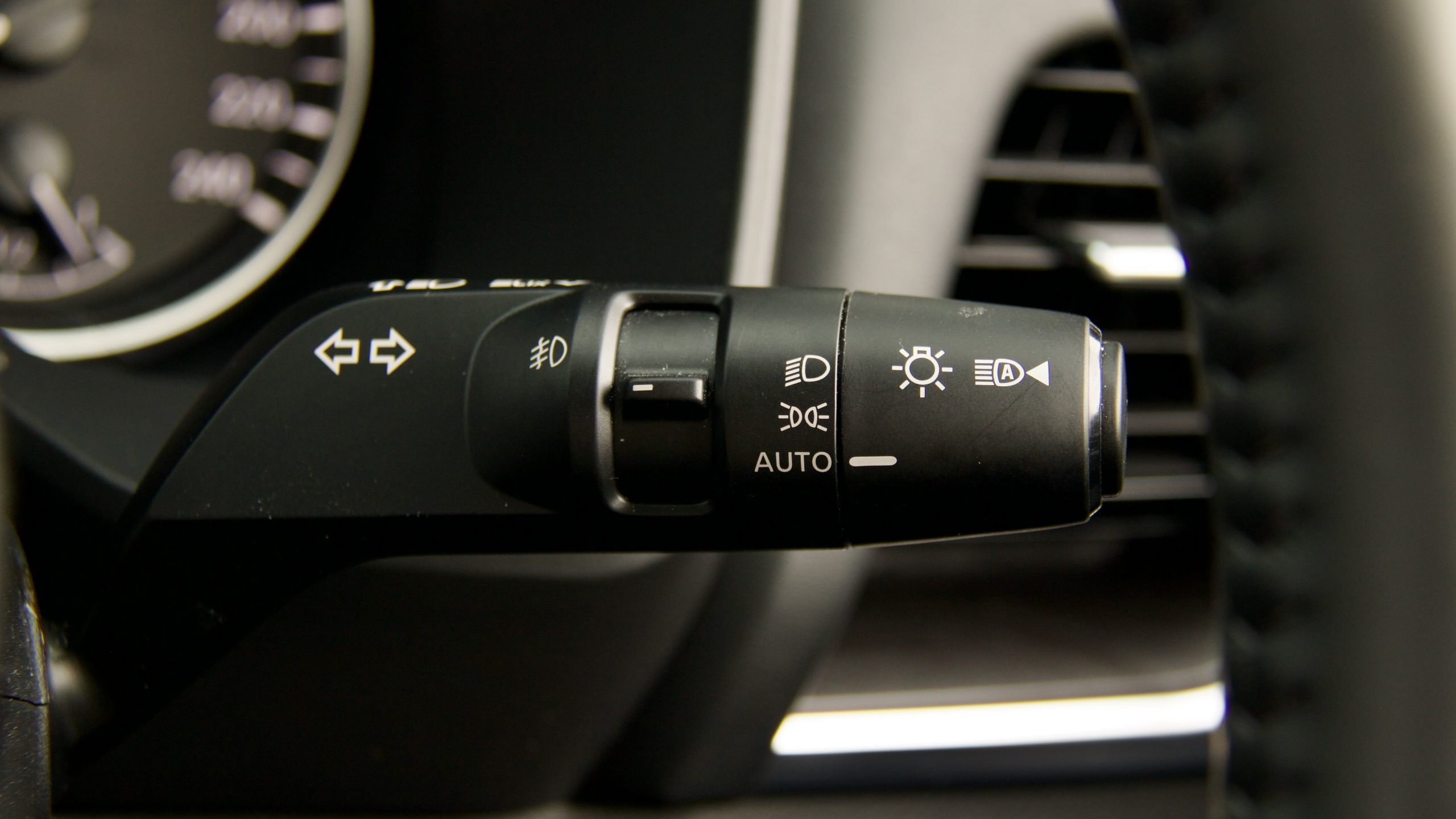
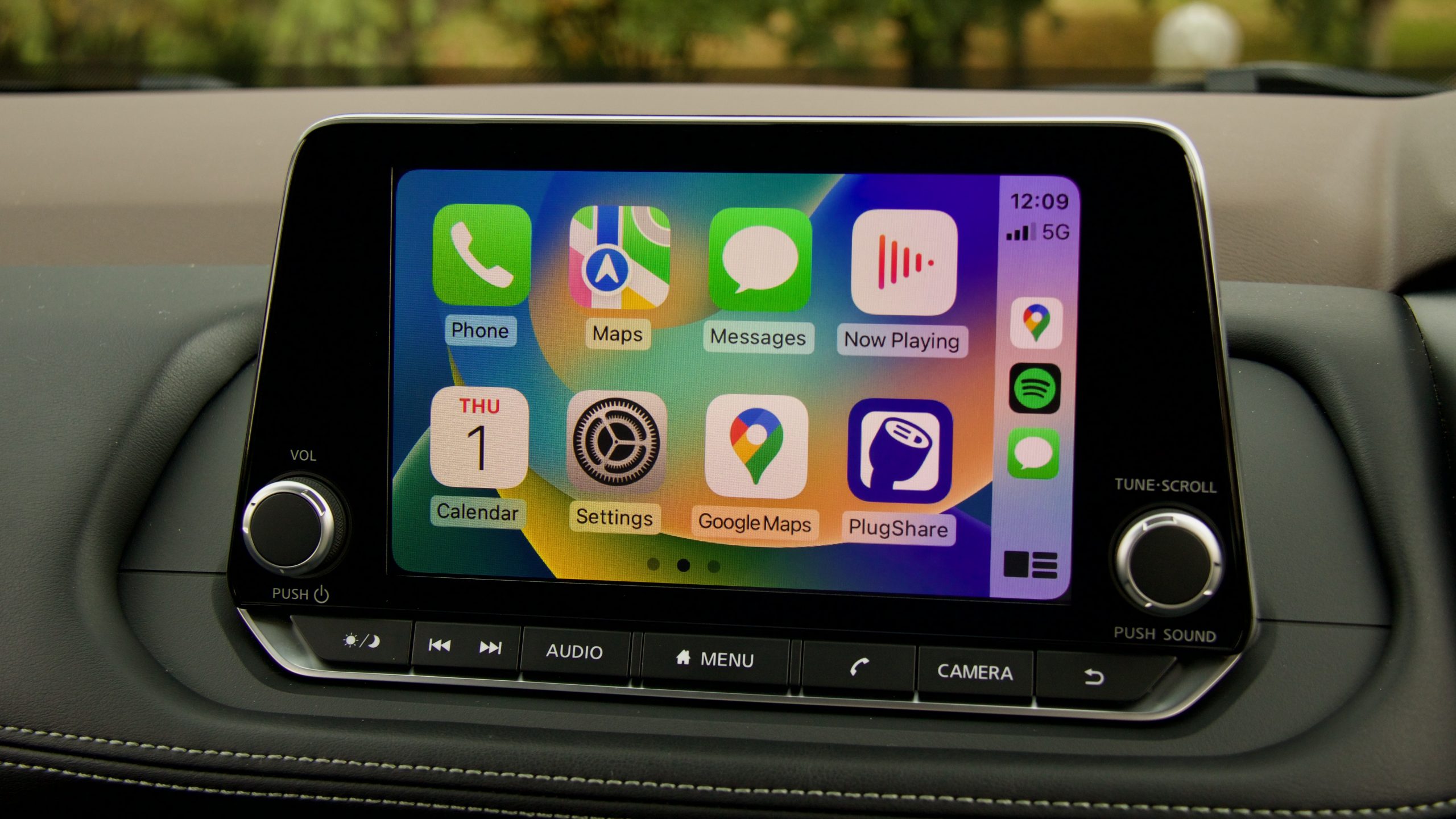
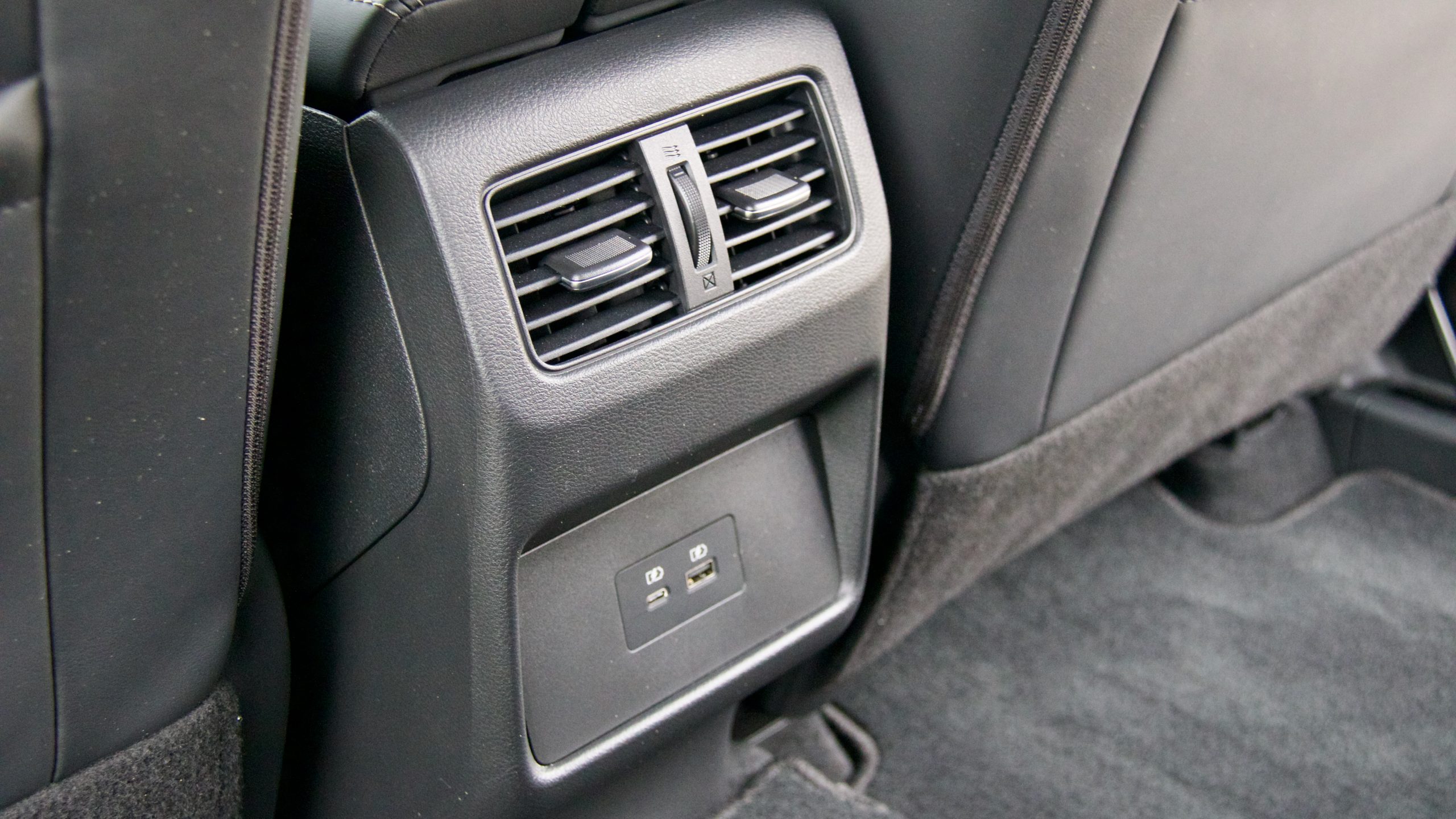
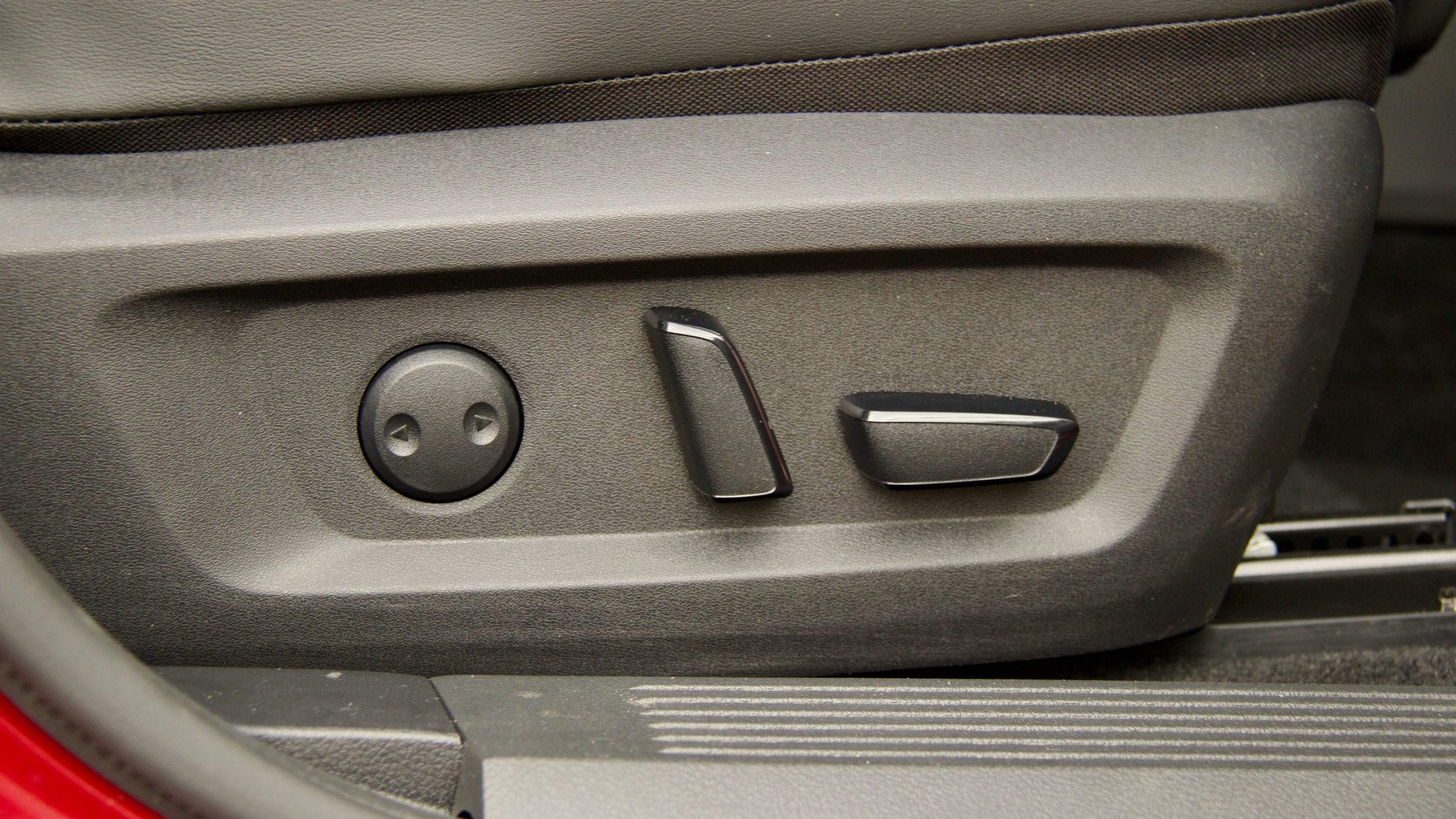
The only non-cost colour option is our test car’s ‘Scarlet Ember’ red, while every other colour costs $700 extra. These include ‘Ivory Pearl’ white, ‘Champagne Silver’ gold, ‘Brilliant Silver’, ‘Gun Metallic’ grey, ‘Caspian Blue’, ‘Ceramic Grey’ and ‘Black Diamond’. The only interior colour option on the ST-L is black.
There are a plethora of rivals to the X-Trail: the Mitsubishi Outlander and Renault Koleos that share its mechanicals, as well as the Kia Sportage, Volkswagen Tiguan, Skoda Karoq, Peugeot 3008, Toyota RAV4, new Honda ZR-V, Haval H6 and Subaru Forester. However, we think the Mazda CX-5 Maxx Sport 2.5L 2WD (priced from around $44,000 drive away) and Hyundai Tucson Elite 2.0L 2WD (priced from around $45,000 drive away) are the X-Trail ST-L 2WD’s closest rivals.
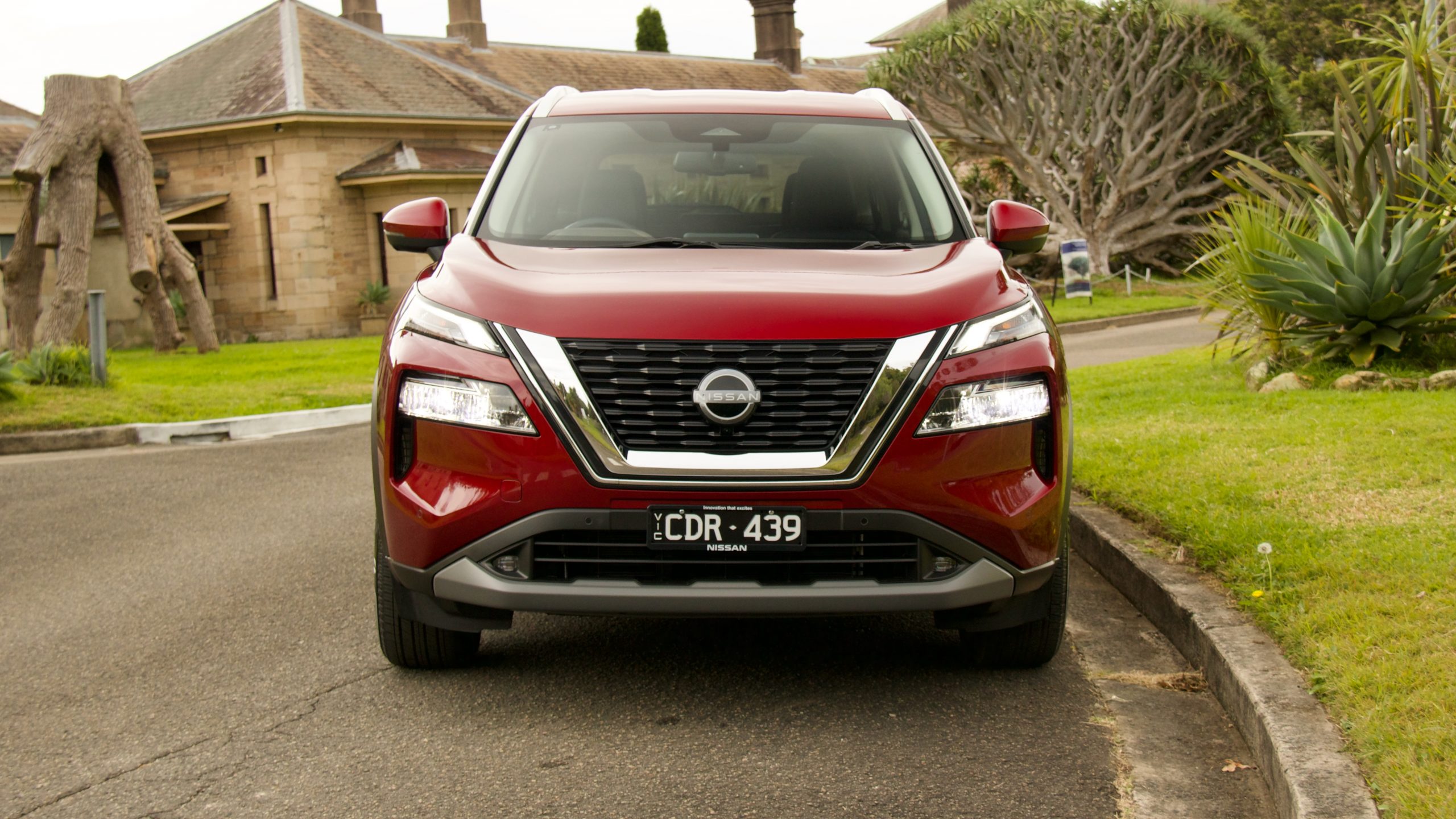
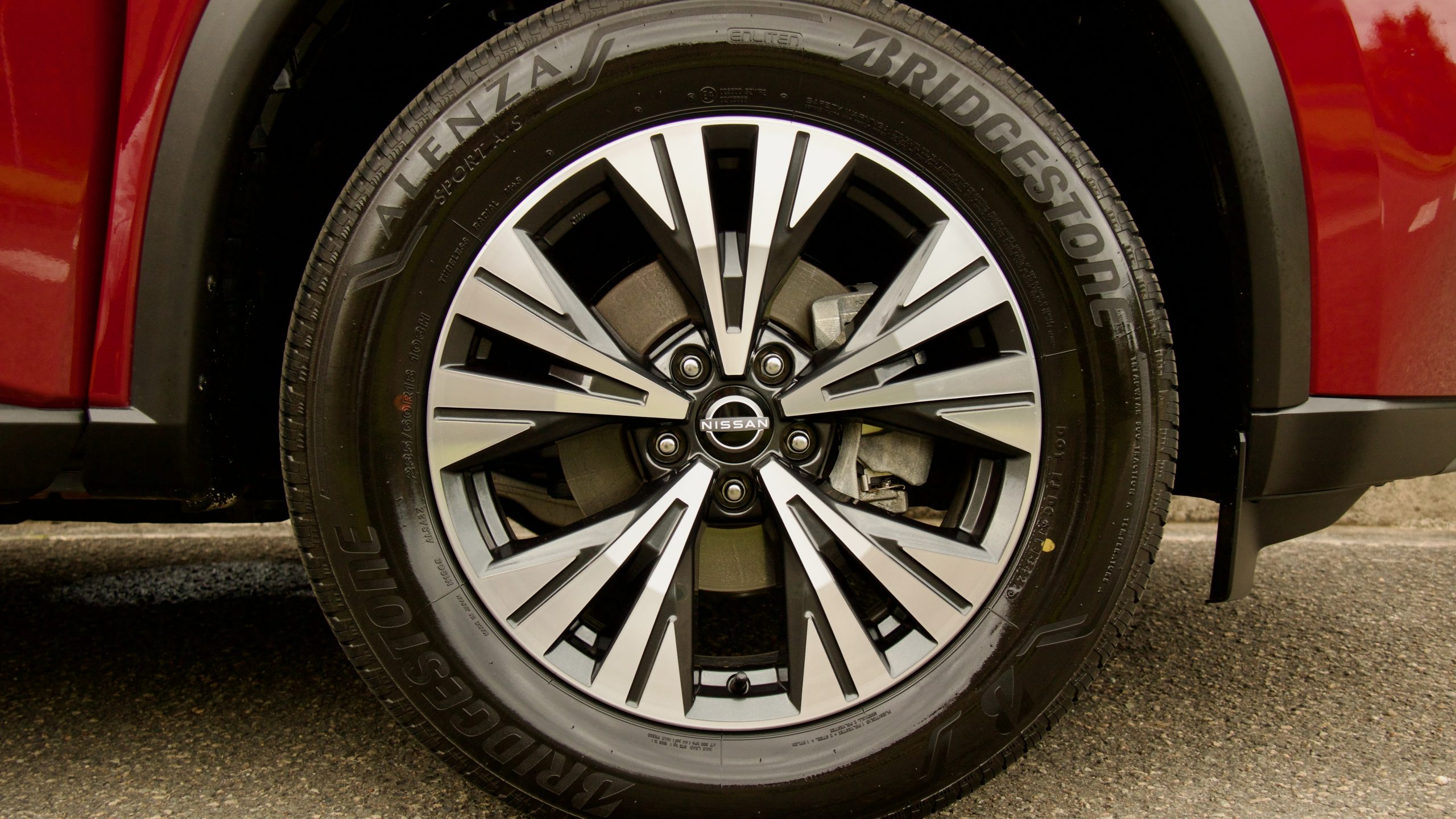
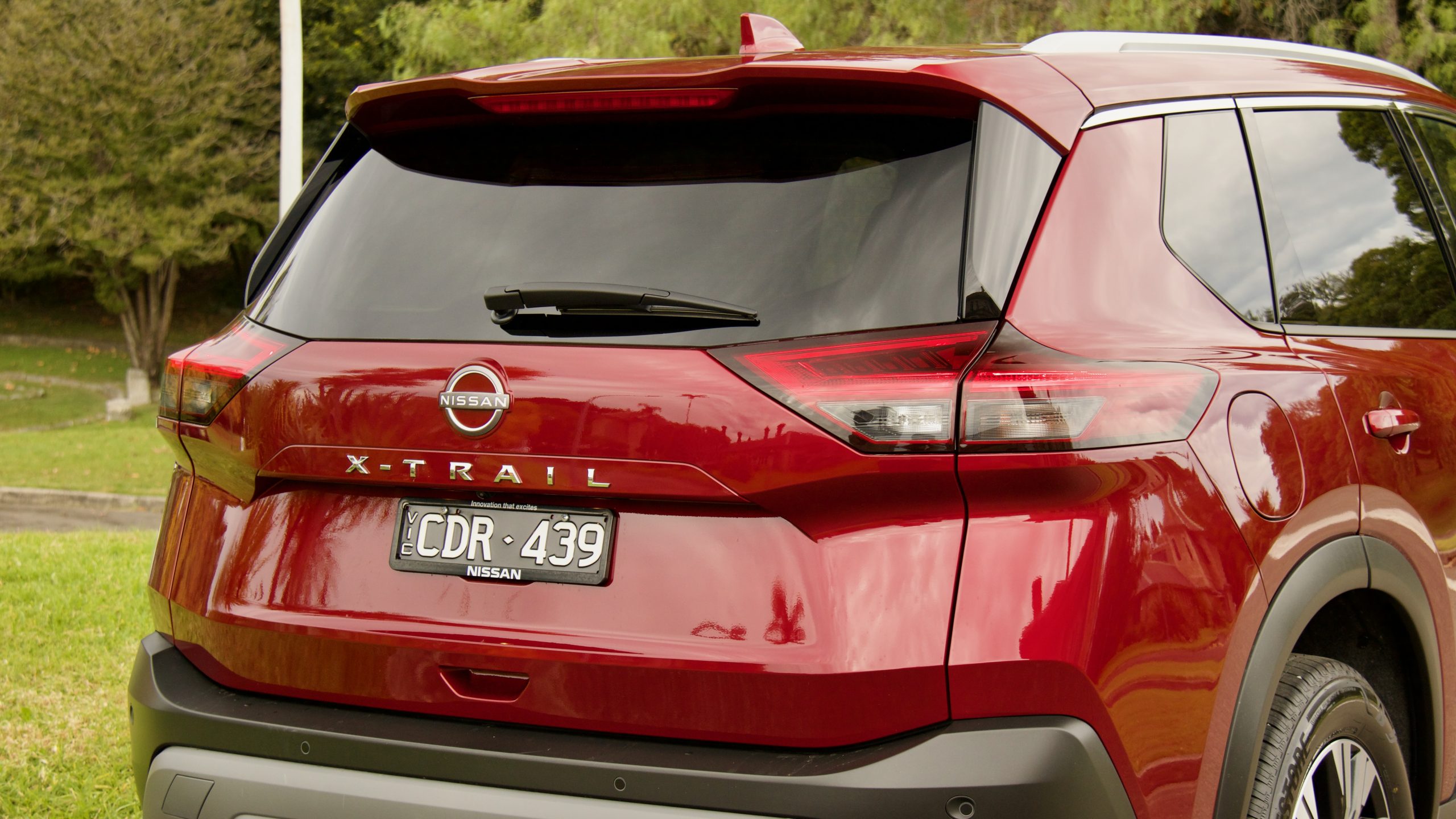
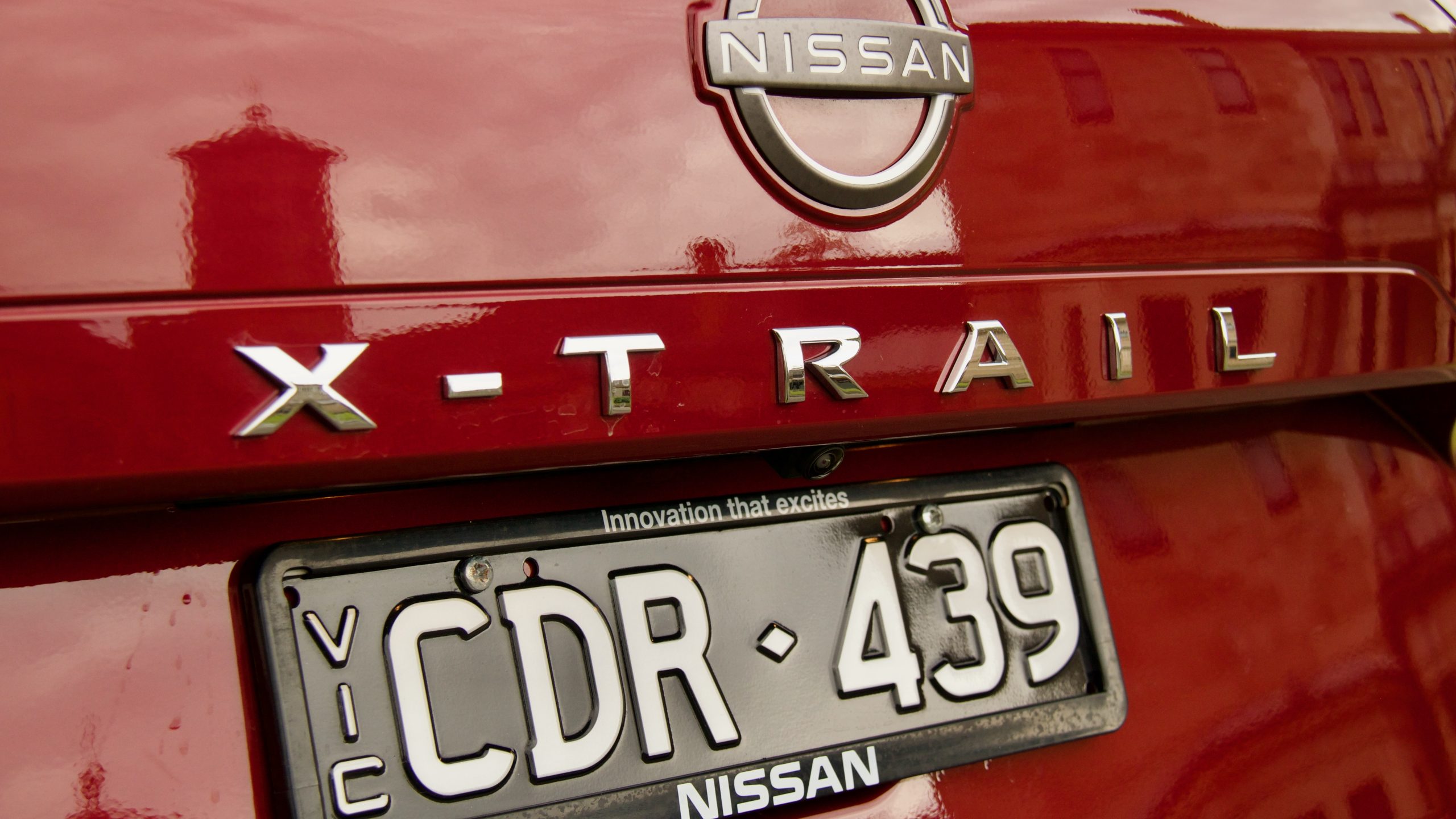
Against the Mazda, the X-Tail’s value equation is clear – yep, it costs around $3,000 more to buy, but it has more standard equipment like larger wheels, synthetic leather upholstery, heated front seats, an electric driver’s seat, a 360-degree camera and safety equipment like lane trace assist. The Mazda does feature a larger 10.25-inch infotainment screen with inbuilt navigation and auto wipers but we think the X-Trail is worth the extra spend.
Against the Tucson Elite, the X-Trail’s value proposition is less clear cut as it also has leather-like trim, auto wipers, a larger centre screen, live services and heated front seats, though the X-Trail features LED headlights, a 360-degree camera and a larger engine for more performance. Although it’s more expensive than before, we think the new X-Trail presents good value in the segment.
Performance & Economy: 7.5/10
Under the bonnet of the 2023 Nissan X-Trail ST-L 2WD is a 2.5-litre four-cylinder petrol engine that makes 135kW of power (at 6,000rpm) and 244Nm of torque (at 3,600rpm). It’s mated to a CVT automatic transmission and in this spec, drives the front wheels only but all-wheel drive (with two extra seats) is available for an extra $3,100. Against the CX-5, the X-Trail makes 5kW less power and 8Nm less torque, and it weighs 9kg more (1,535kg versus 1,544kg), though against the slightly lighter Tucson (1,527kg), it makes a full 20kW more power and 52Nm more torque and feels much peppier.
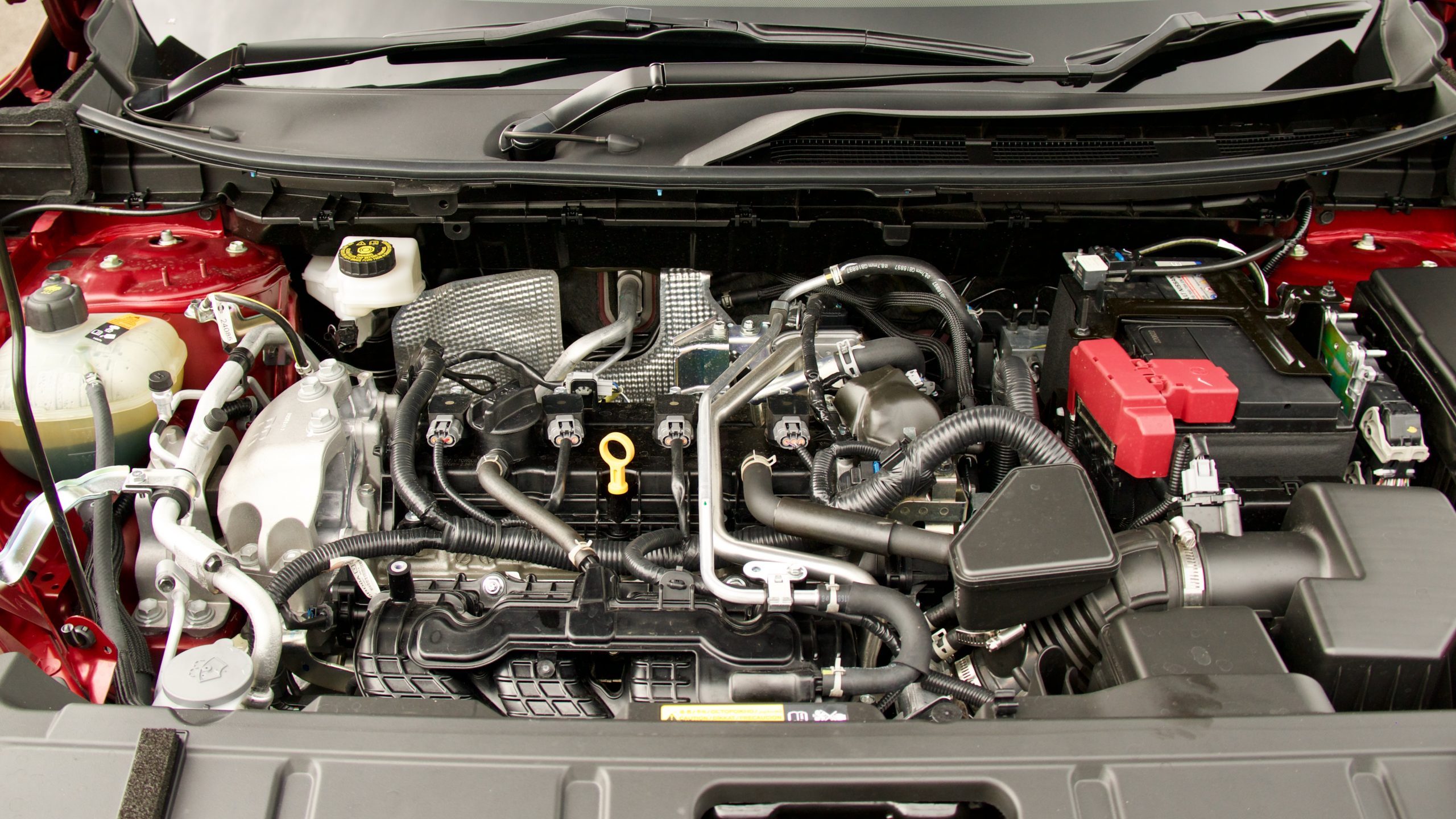
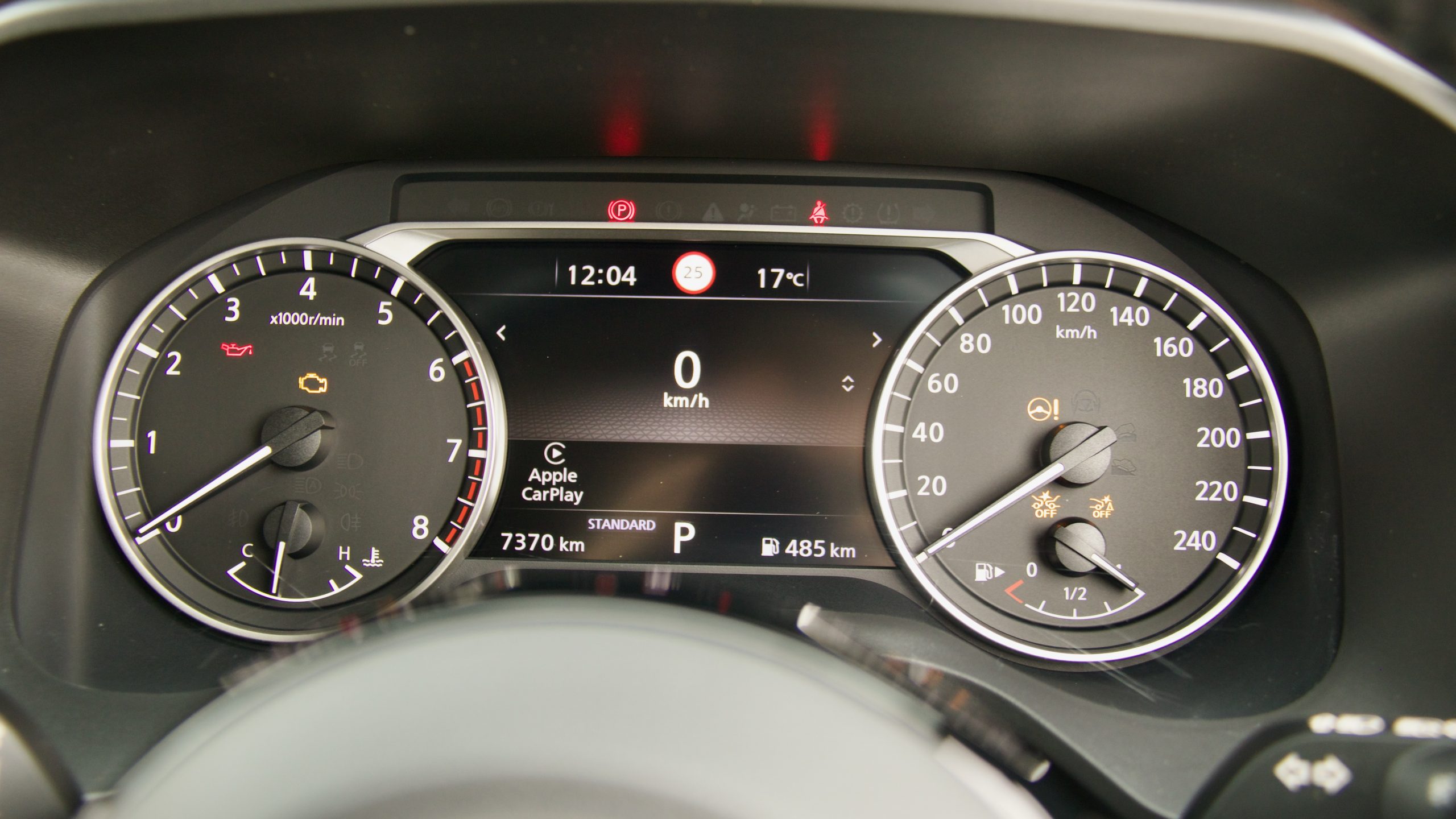
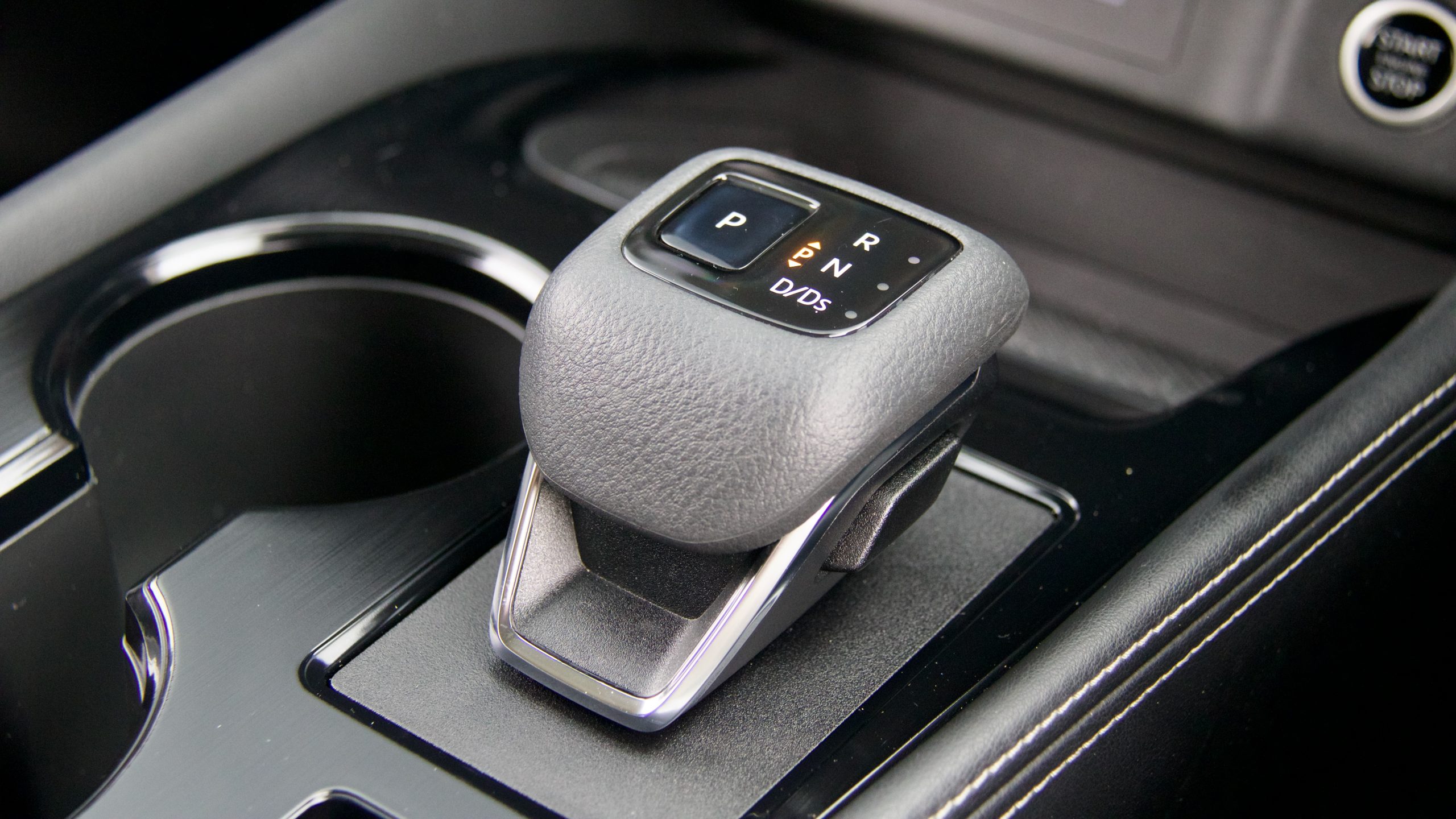
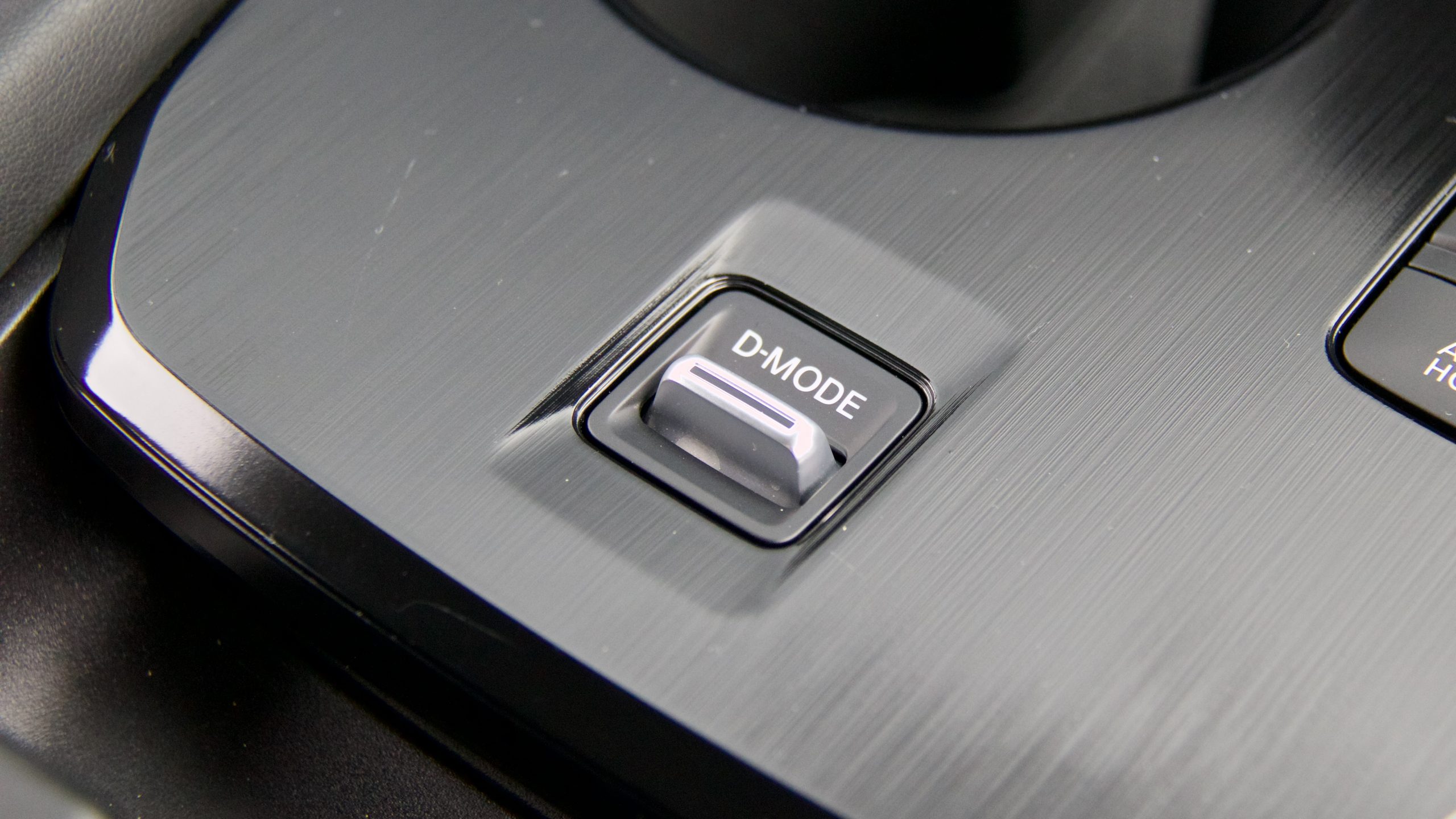
In isolation, the performance of the X-Trail is fine. Its performance is nothing too hasty, but is perfectly fine for its target market. The CVT automatic transmission, as is the case with a lot of CVTs, does zap some power from the engine. Floor the throttle and, like in most other CVTs, the revs take a moment to spike but once they do, it employs a reasonable job of ratio stepping for a more natural torque converter auto feel. The transmission is fine, but the six-speed automatics in the CX-5 and Tucson are more intuitive for keener drivers, if that’s your thing.
In North America, where this generation X-Trail has been on sale for a few years now, a 150kW/305Nm 1.5-litre turbocharged three-cylinder petrol engine features across the range and we think this would be a great fit for the Australian model thanks to its superior performance (peak 305Nm torque hits at just 2,800rpm and is 61Nm greater) and likely improved fuel economy. We hope that engine makes it into the Australian X-Trail soon.

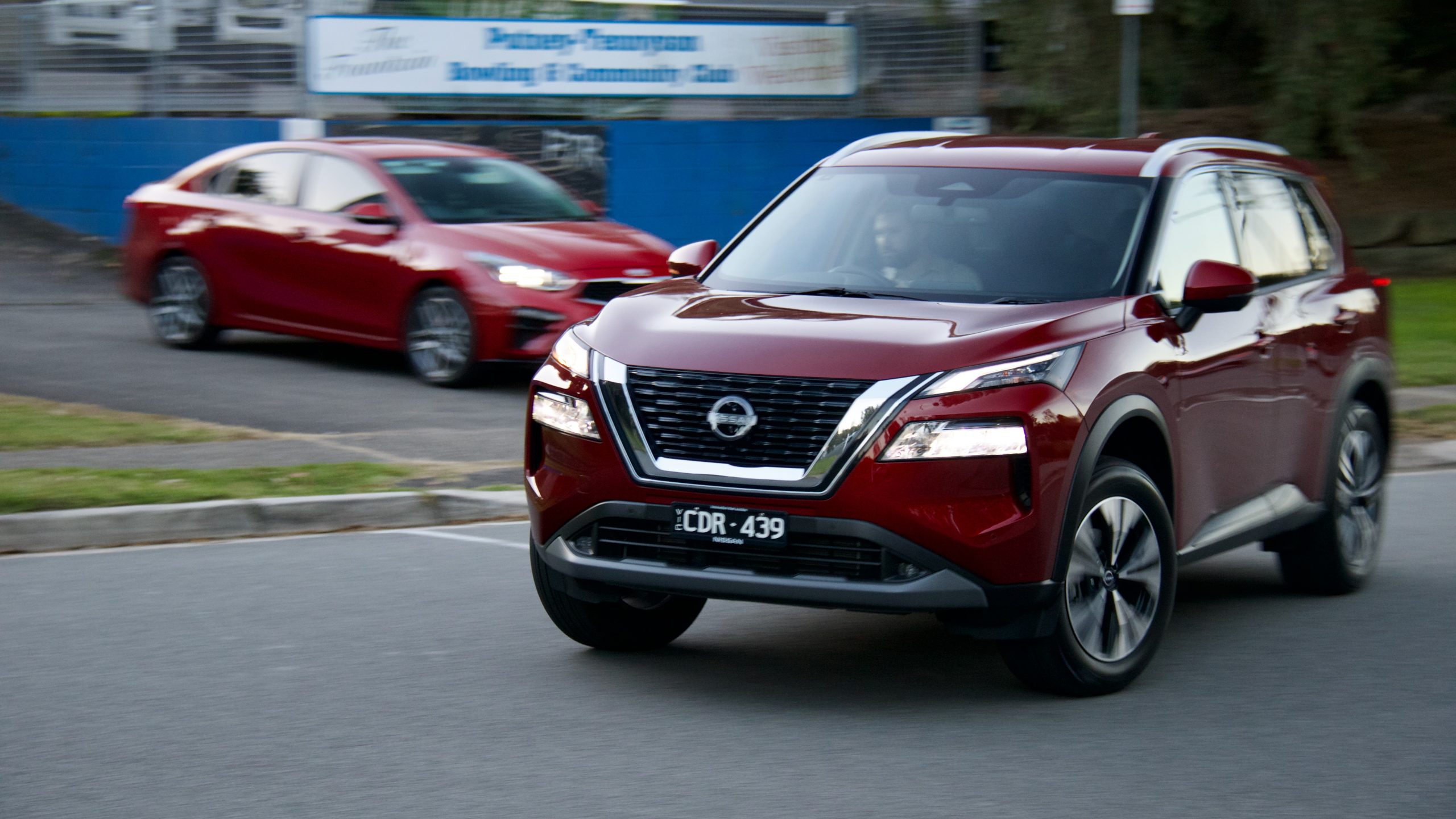
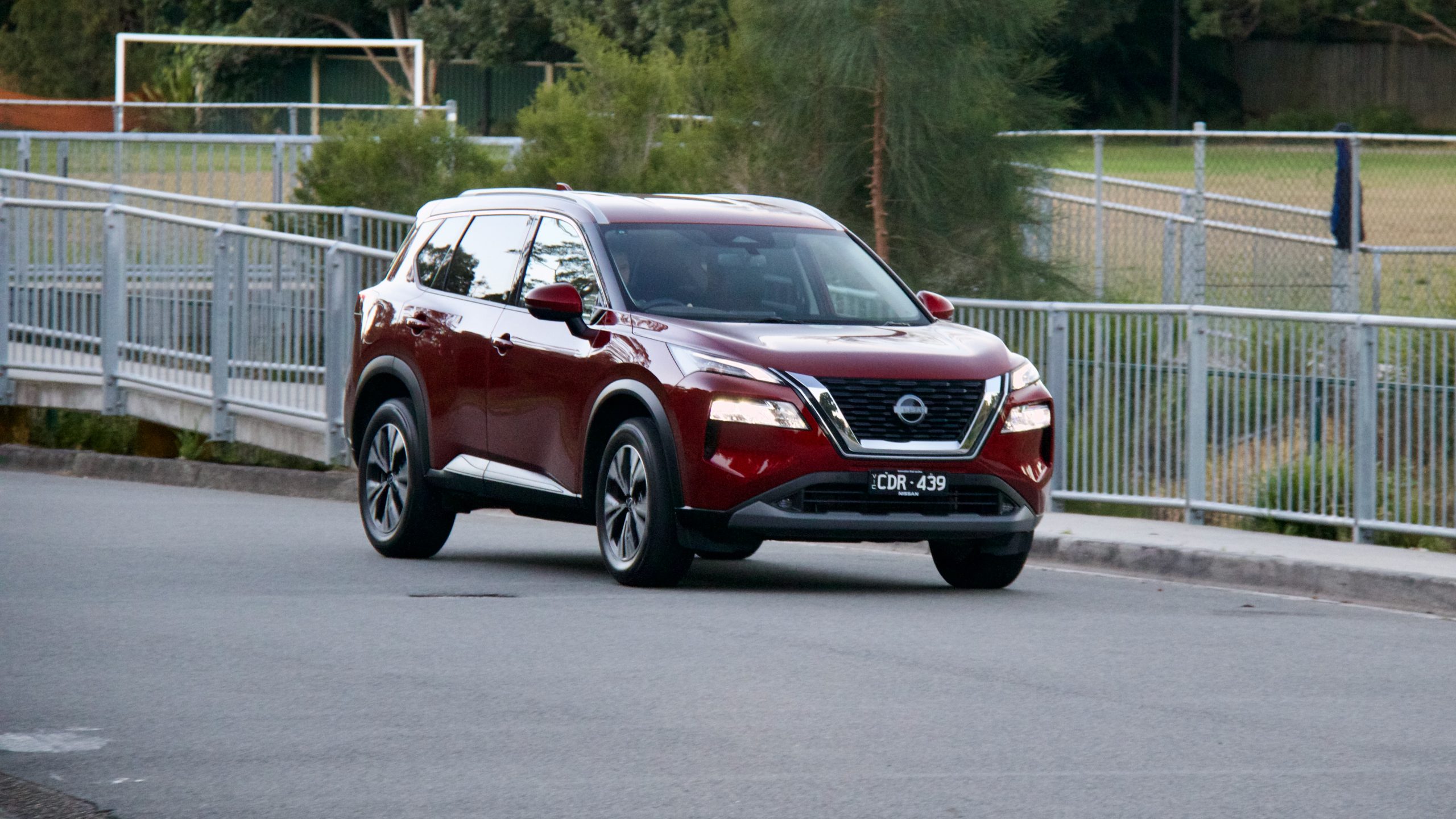

The claimed combined fuel consumption for the X-Trail ST-L 2WD is 7.4L/100km with CO2 emissions of 174g/km – in comparison, the CX-5 is rated at 7.2L/100km and the Tucson is rated at 8.1L/100km. In mixed driving, we achieved a reasonable 8.3L/100km. Helping running costs is that the X-Trail can run on 91RON regular unleaded fuel, and it has a 55-litre fuel tank.
Ride & Handling: 8/10
Based on the same ‘CMF-CD’ as the previous generation X-Trail – as well as the Renault Koleos, Mitsubishi Outlander and its smaller Qashqai sibling – the 2023 Nissan X-Trail ST-L is not a dynamic superstar. However, it’s quite comfortable, offers good refinement and is quite a relaxing drive. Overall, we think the Tucson offers a slightly better balance of ride and comfort, but while the CX-5 is the sports car of the medium SUV segment, the X-Trail’s ride is definitely more comfortable.
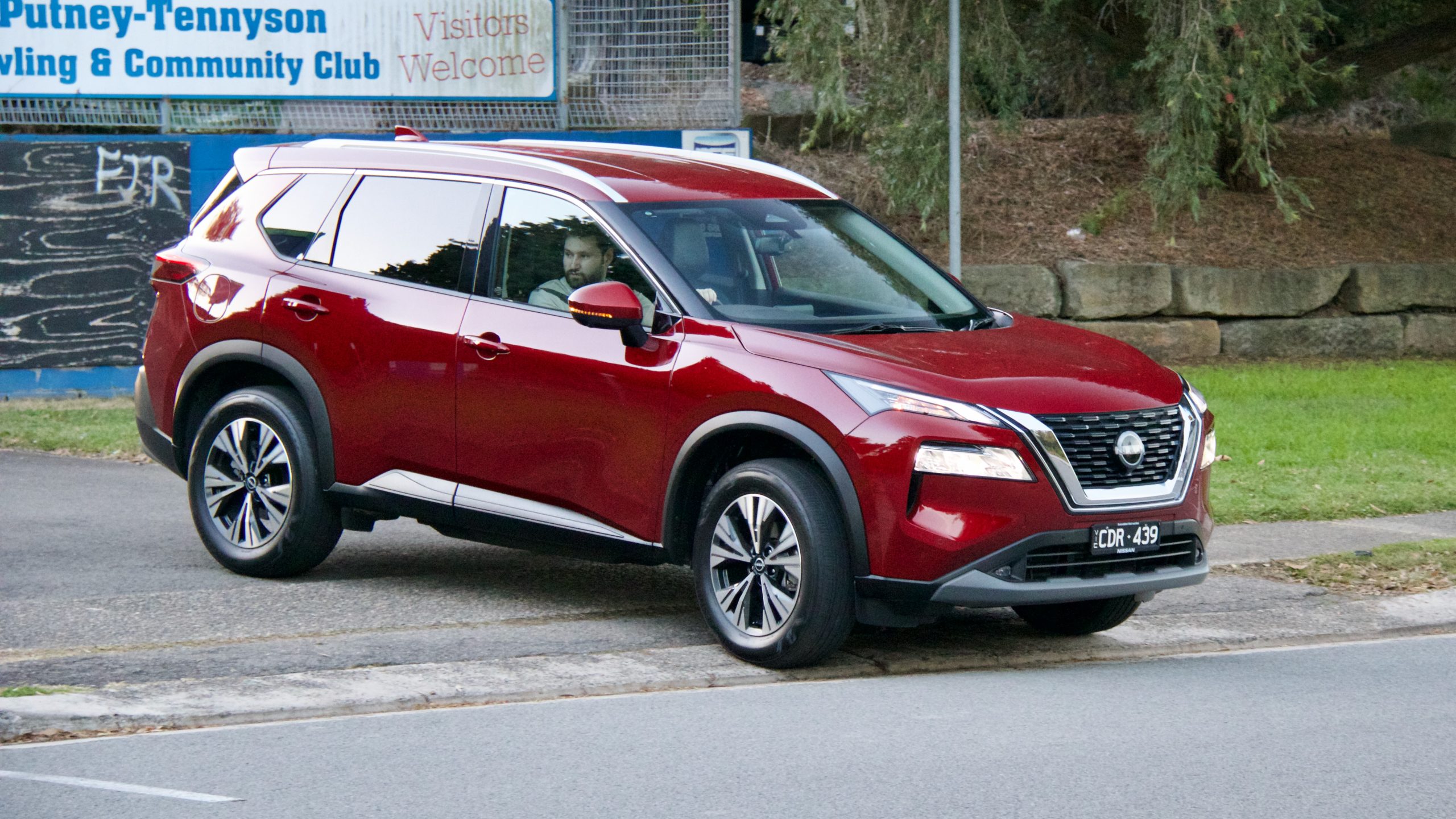
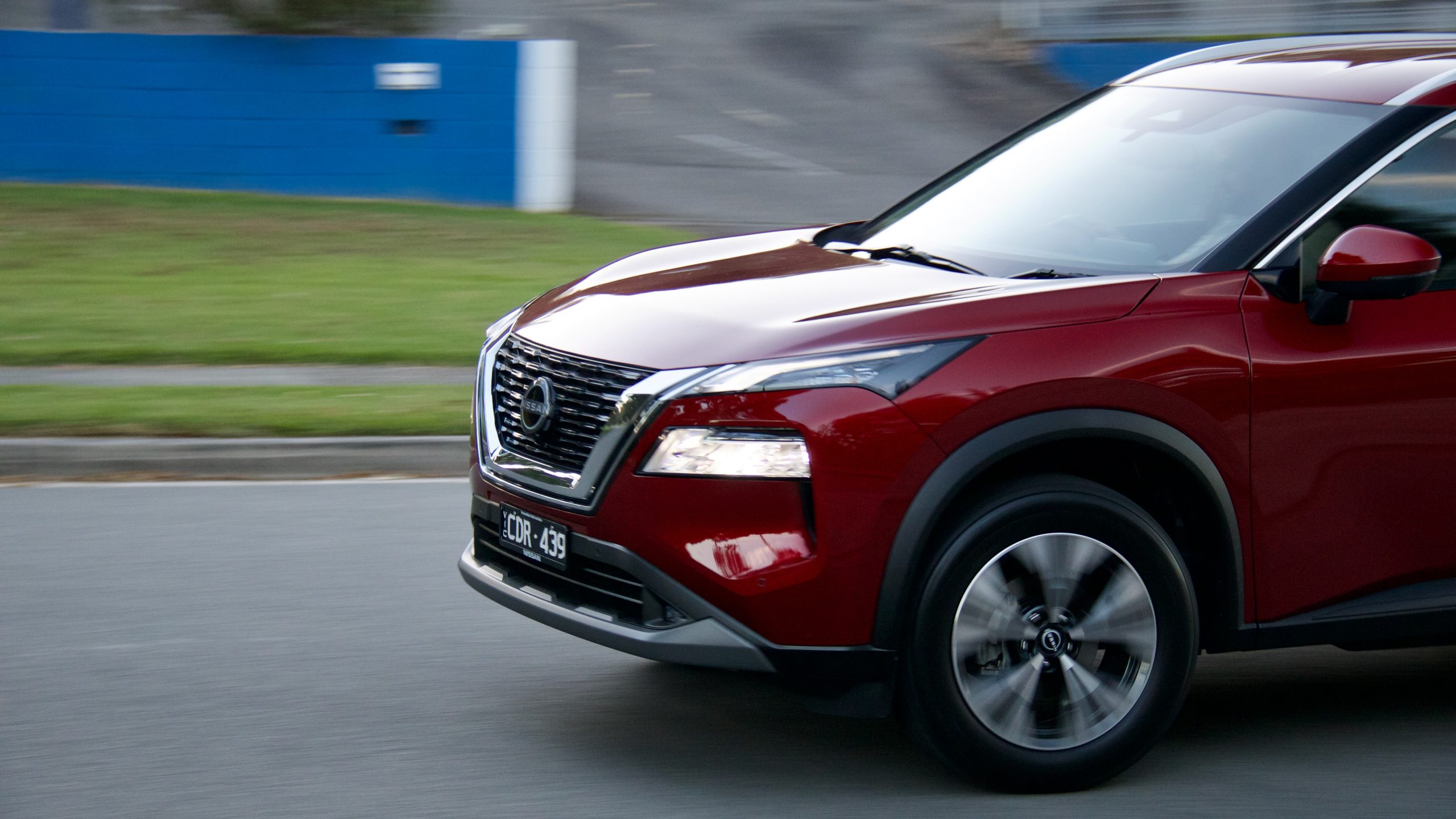
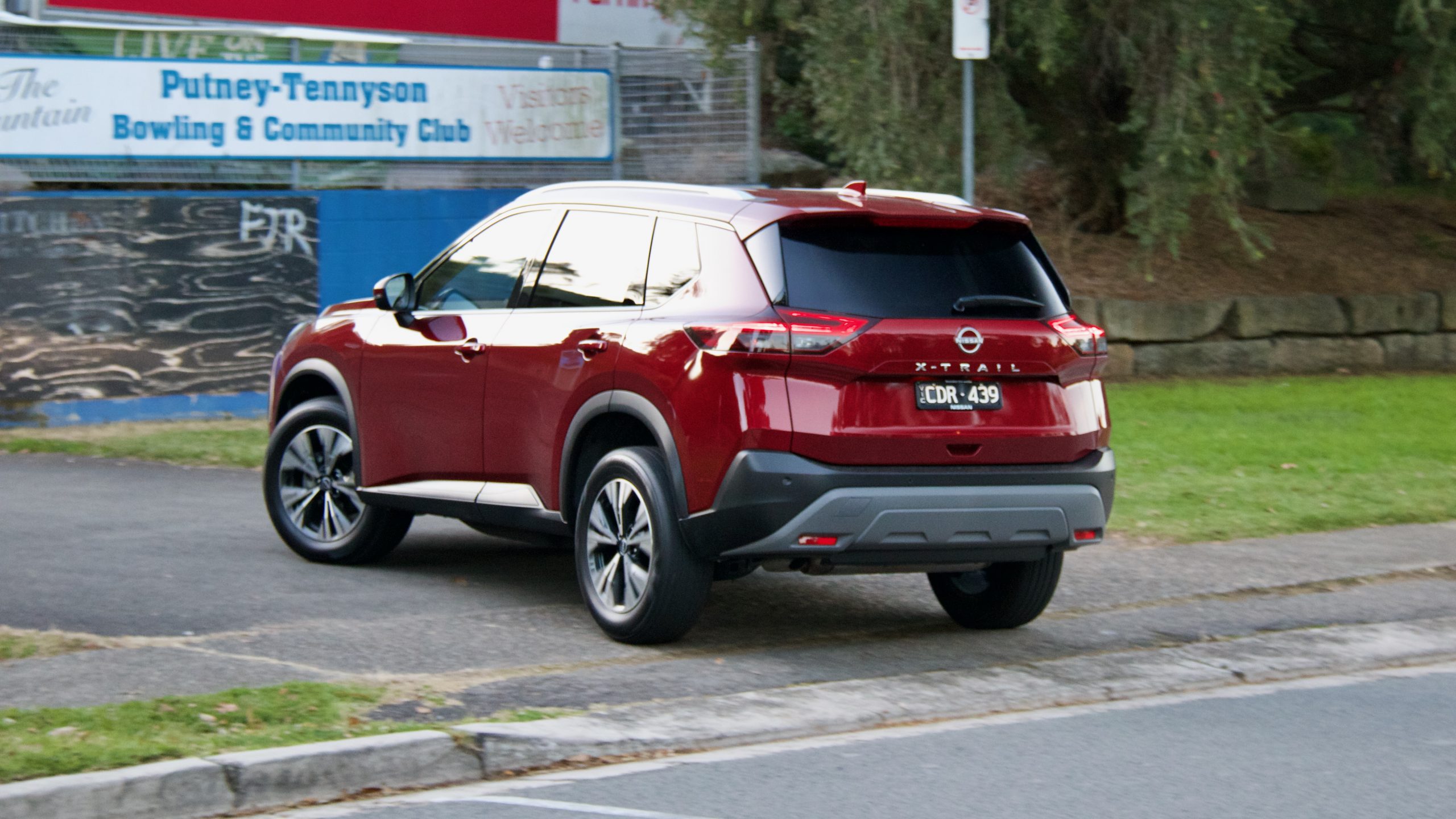
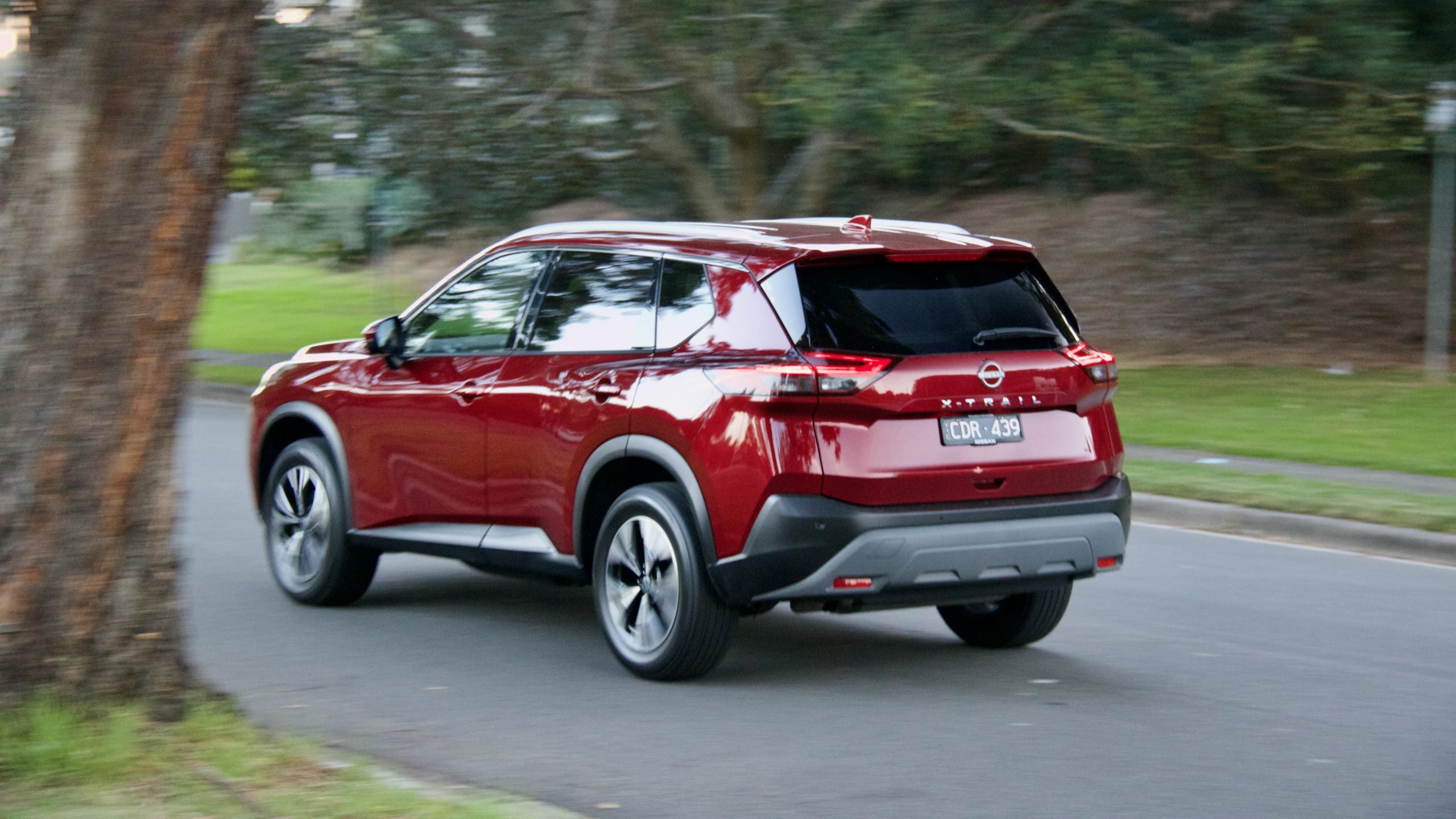
Elsewhere, the X-Trail’s driving experience is positive. It’s pleasantly quiet for road noise at highway speeds thanks to good refinement, while the visibility – aside from the high waist – is also mostly pretty good too. Nissan’s active safety kit is generally quite well tuned, especially its ‘ProPilot’ semi-autonomous driving features like lane trace assist and active cruise control. The X-Trail ST-L 2WD can tow a 2,000kg braked trailer – 200kg more than the CX-5 Maxx Sport 2WD and 350kg more than the Tucson Elite 2.0L 2WD.
Interior & Practicality: 9/10
The interior of the 2023 Nissan X-Trail ST-L is a big step up on the previous generation X-Trail. Its design is more upmarket and cohesive with plenty of integrated technology. The quality inside the X-Trail has been improved immensely compared with the previous-generation car with richly deep soft touch plastics on the dashboard and door tops, synthetic leather on the dashboard fascia and doors and some charming faux wood trim on the centre console. It’s clear that there has been a lot more effort placed into this generation X-Trail’s interior overall, and the upgraded quality in particular has us quite impressed.
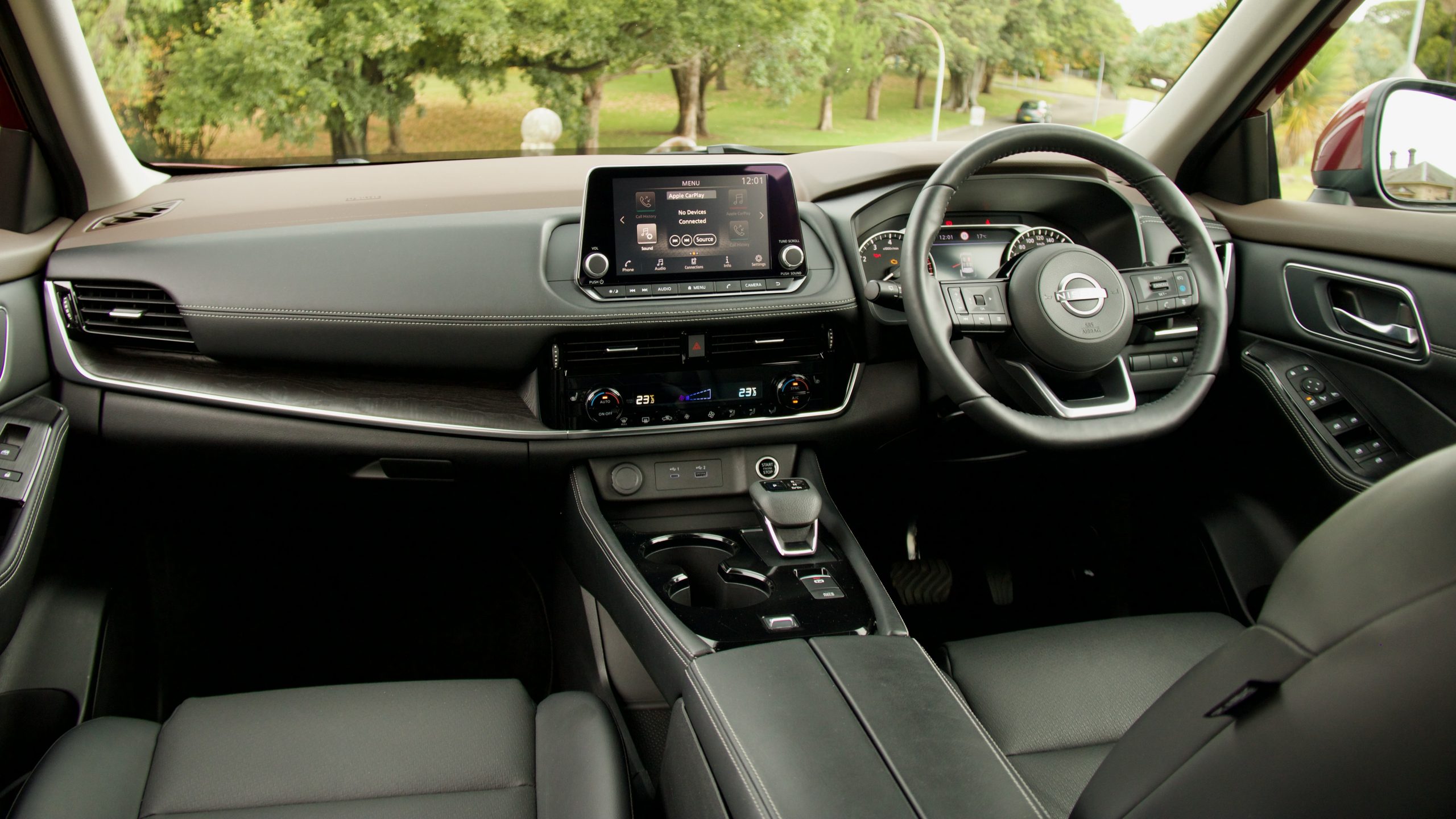
Centre of the X-Trail’s cabin is an 8.0-inch touchscreen with wired Apple CarPlay and Android Auto and digital radio – but no satellite navigation or wireless smartphone mirroring, both of which are added in the next-step-up Ti, as well as a larger 12.3-inch touchscreen. The software powering the screen uses Nissan’s last generation operating system – unlike the larger screen in models above – which makes it feel a bit dated. The aforementioned missing functionality makes the system feel a bit limited and small against the 10.25-inch units in the CX-5 and Tucson.
The six-speaker sound system provides reasonable punch, while the 7.0-inch digital driver’s display provides a lot of information, though the 12.3-inch unit in higher-spec models feels more modern. The X-Trail’s driving position is largely positive, however, with supportive and comfortable seats covered in pretty convincing synthetic leather upholstery.
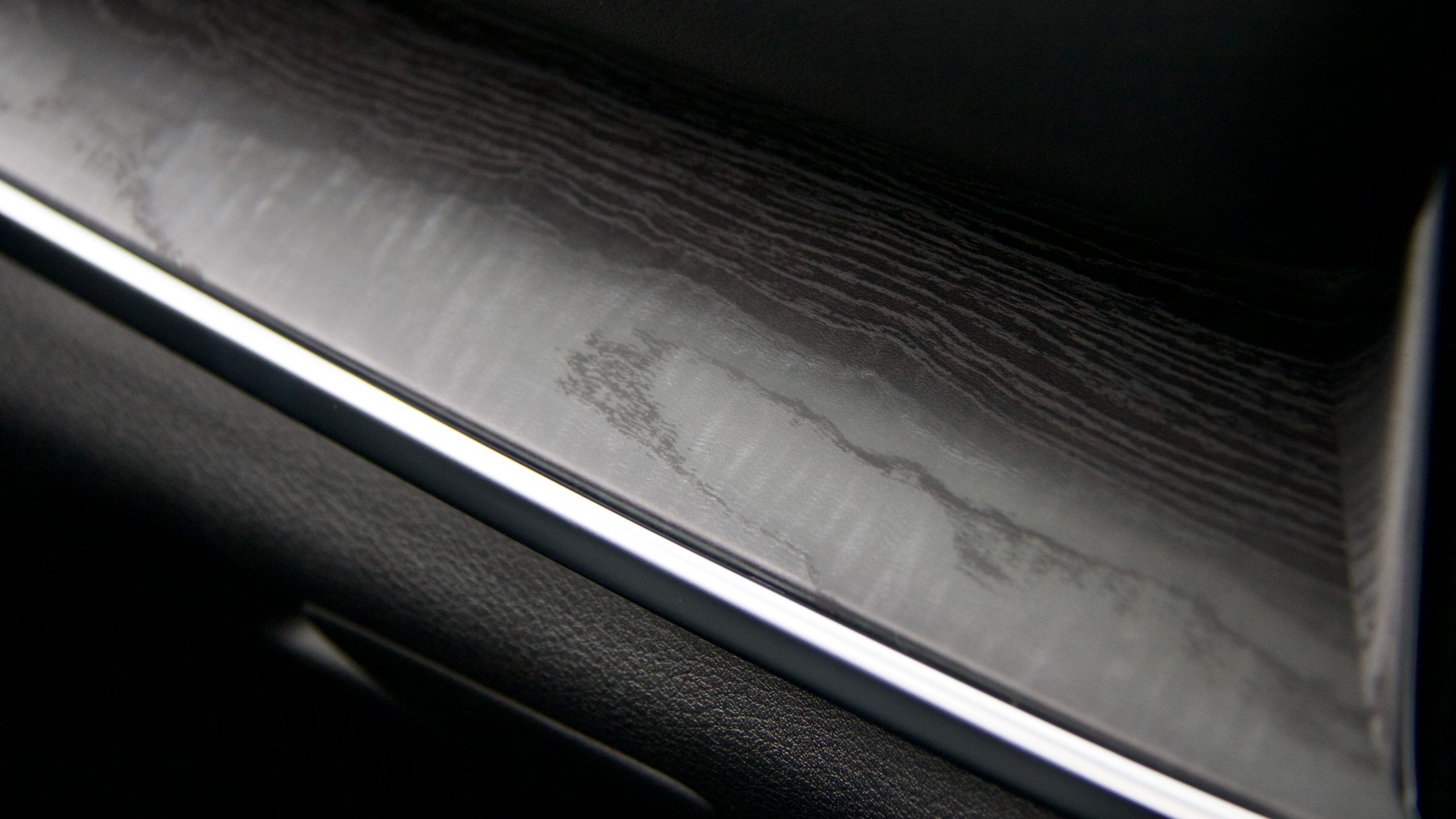
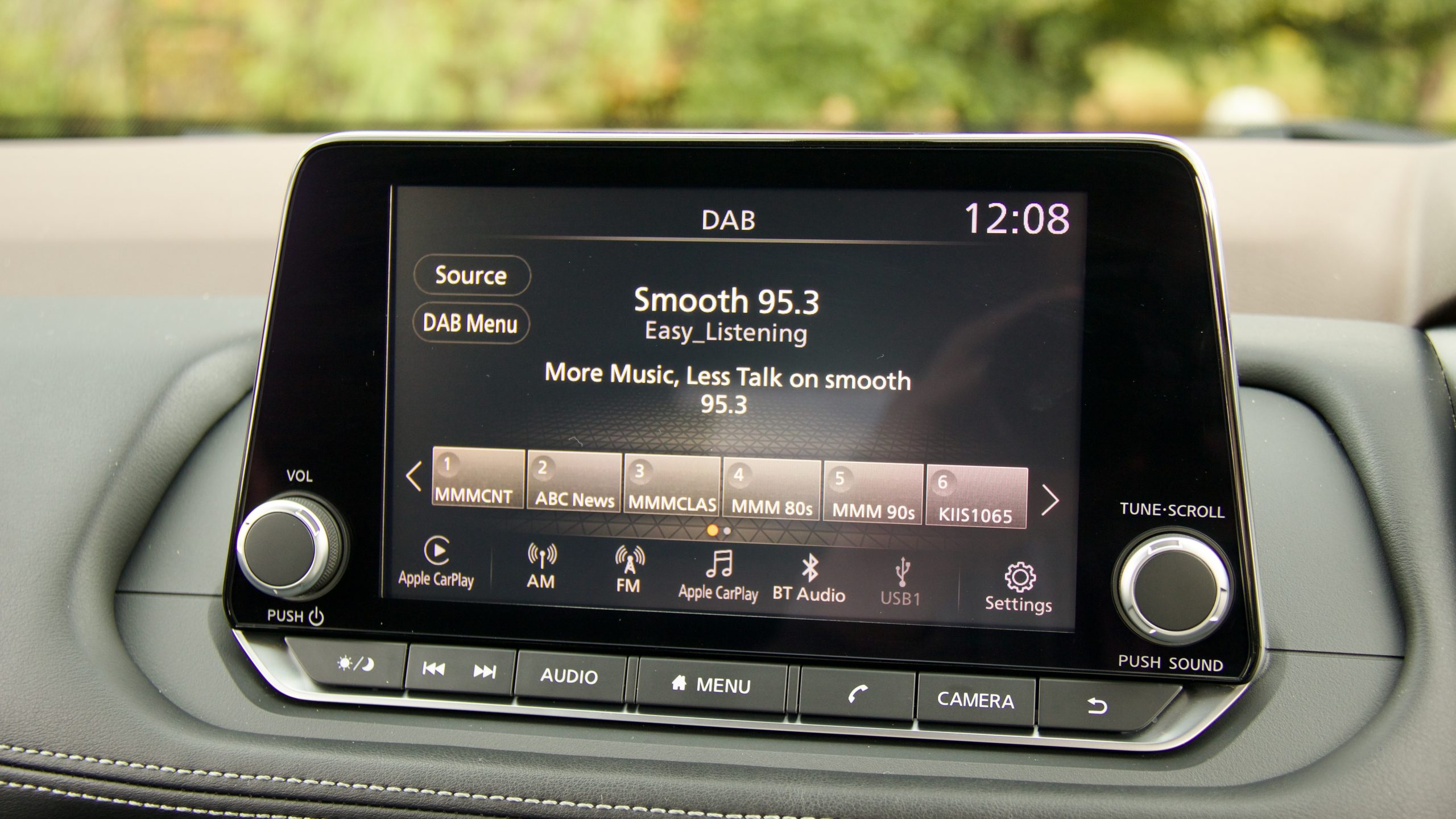
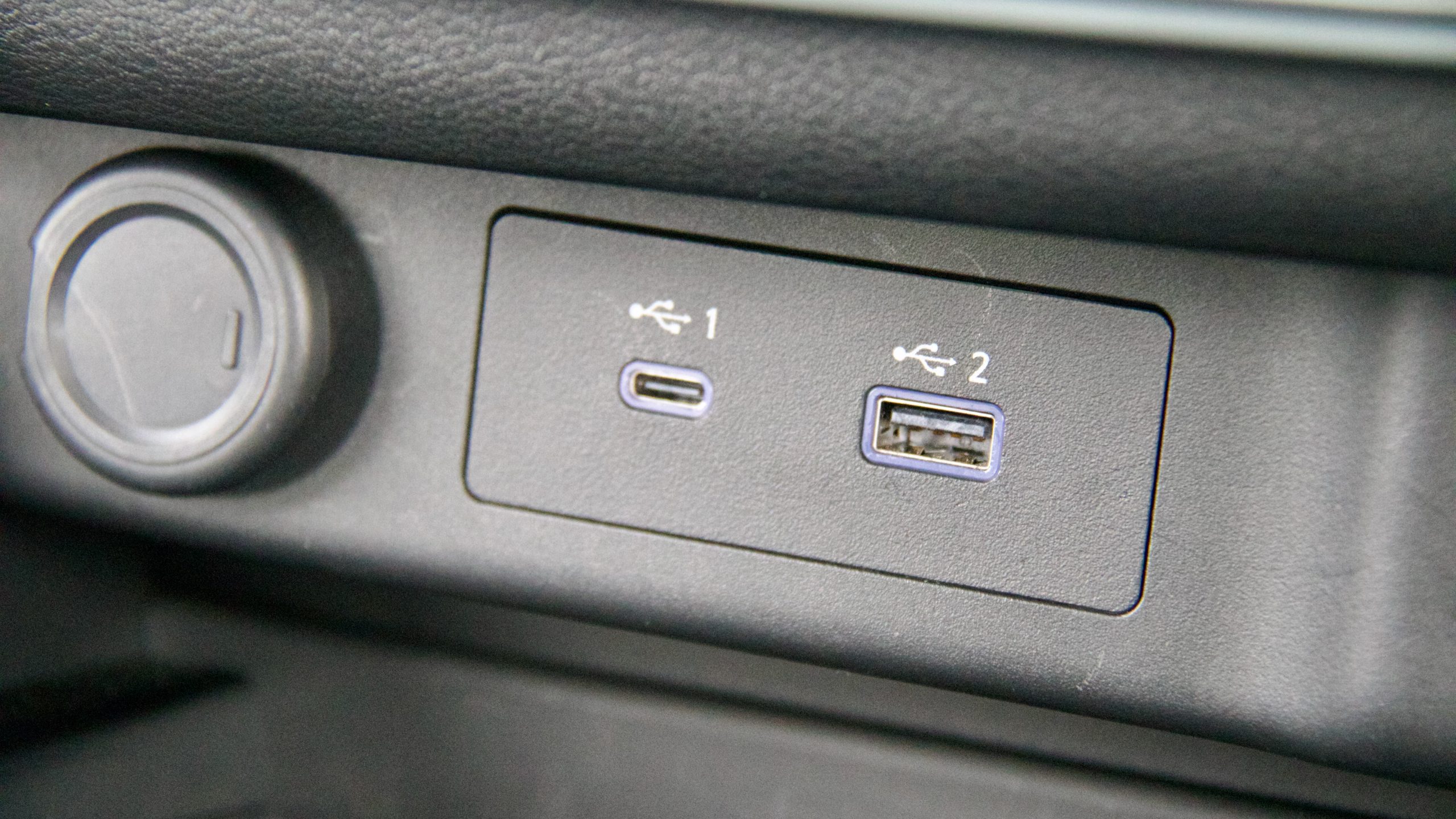
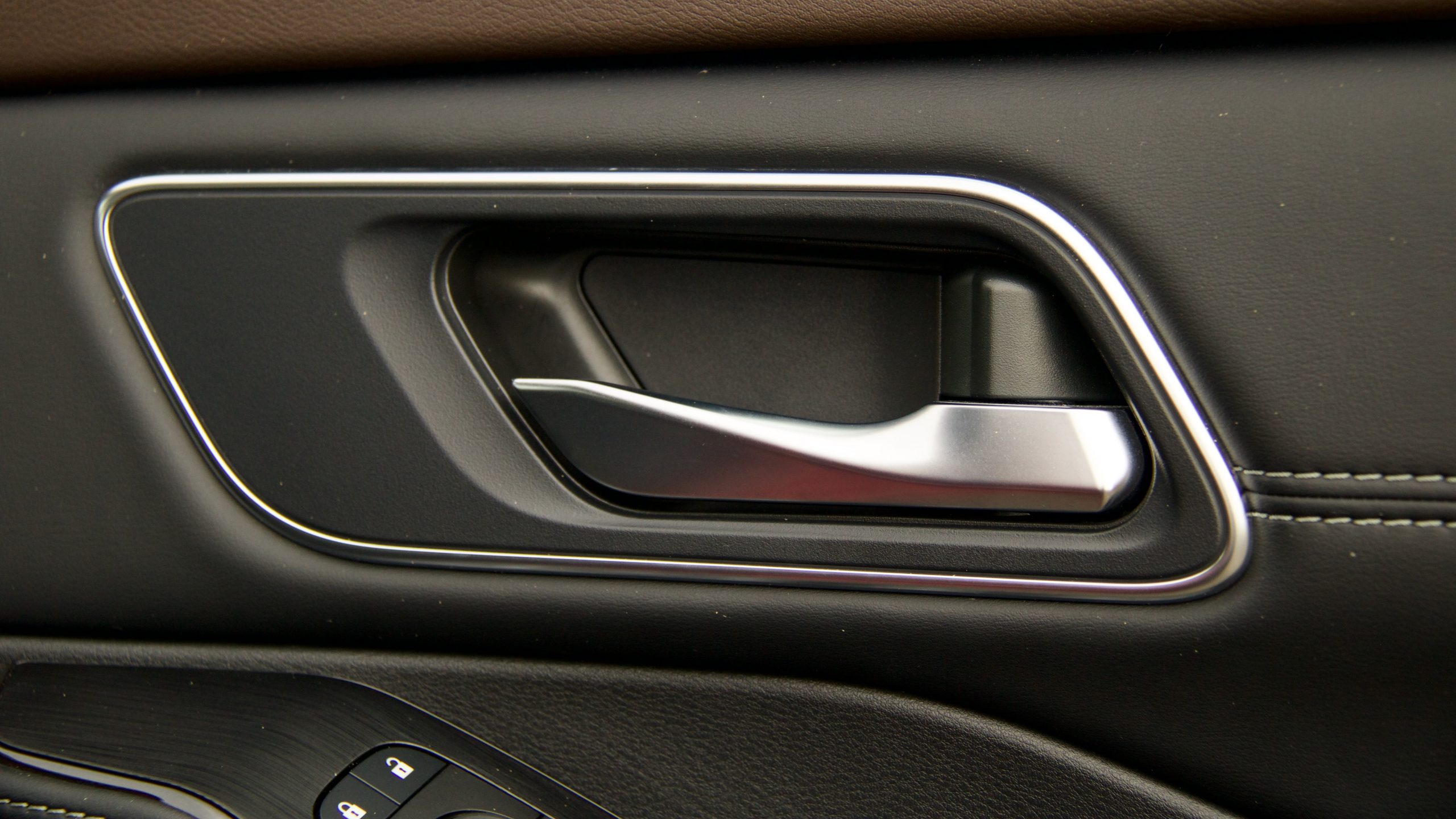
The X-Trail’s cabin is quite practical with a big centre console with cup holders, a large tray, a deep box underneath the arm rest, a secret tray underneath the centre console and a reasonable glove box, though the small-ish door pockets that could be larger.
The rear seat space of the X-Trail ST-L five-seater is spacious for the segment with good leg- and headroom on offer, as well as two map pockets, two USB charging ports, air vents, a centre armrest with cup holders and door pockets. Largely uniquely for the segment as well, the rear seat both slides and reclines to increase space in either the rear seat or boot. Adding further to its practicality is that the rear doors open to 85 degrees, helping entry and exit massively. There are two ISOFIX points, as well as three top-tether points for child seats.
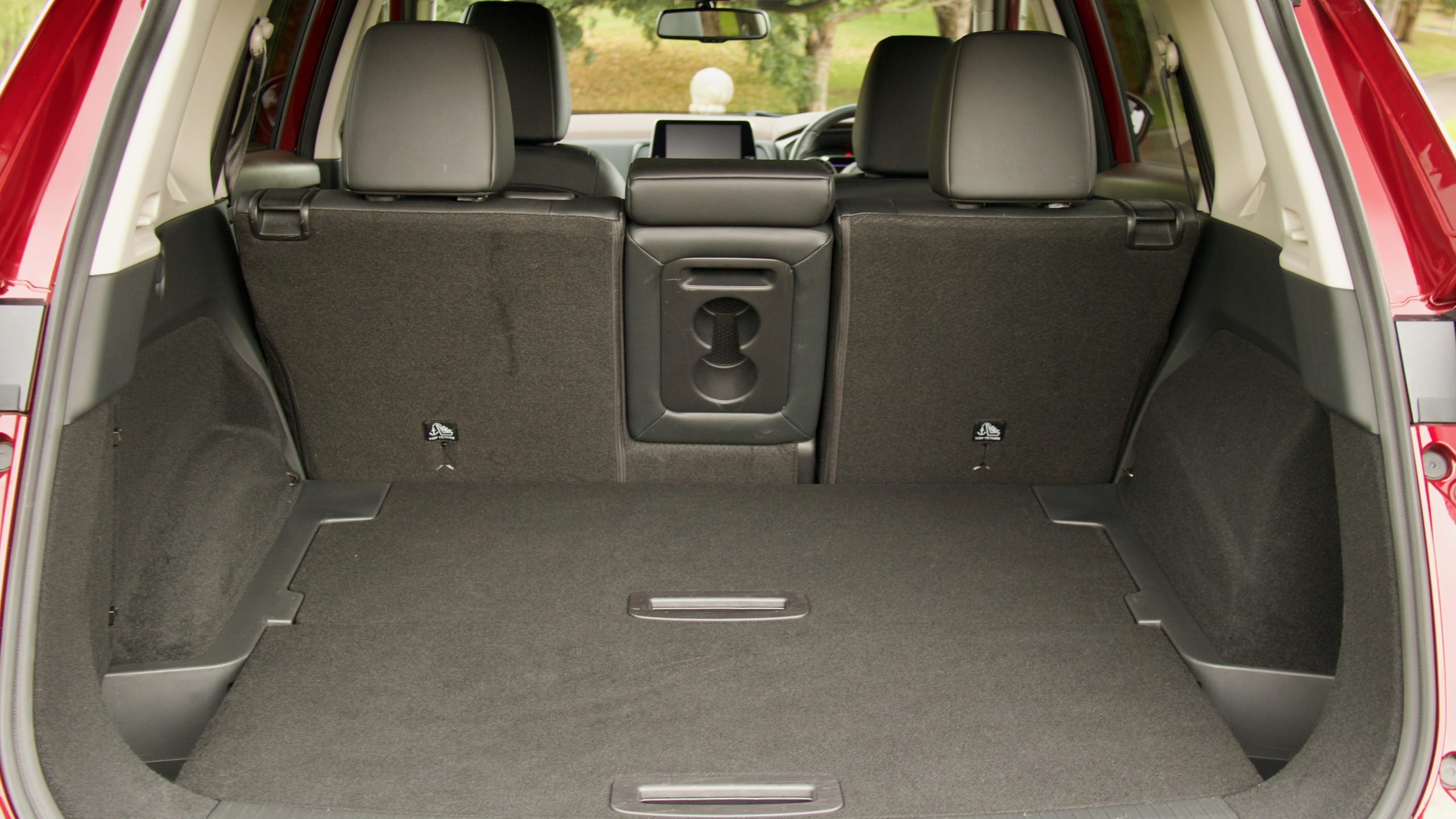
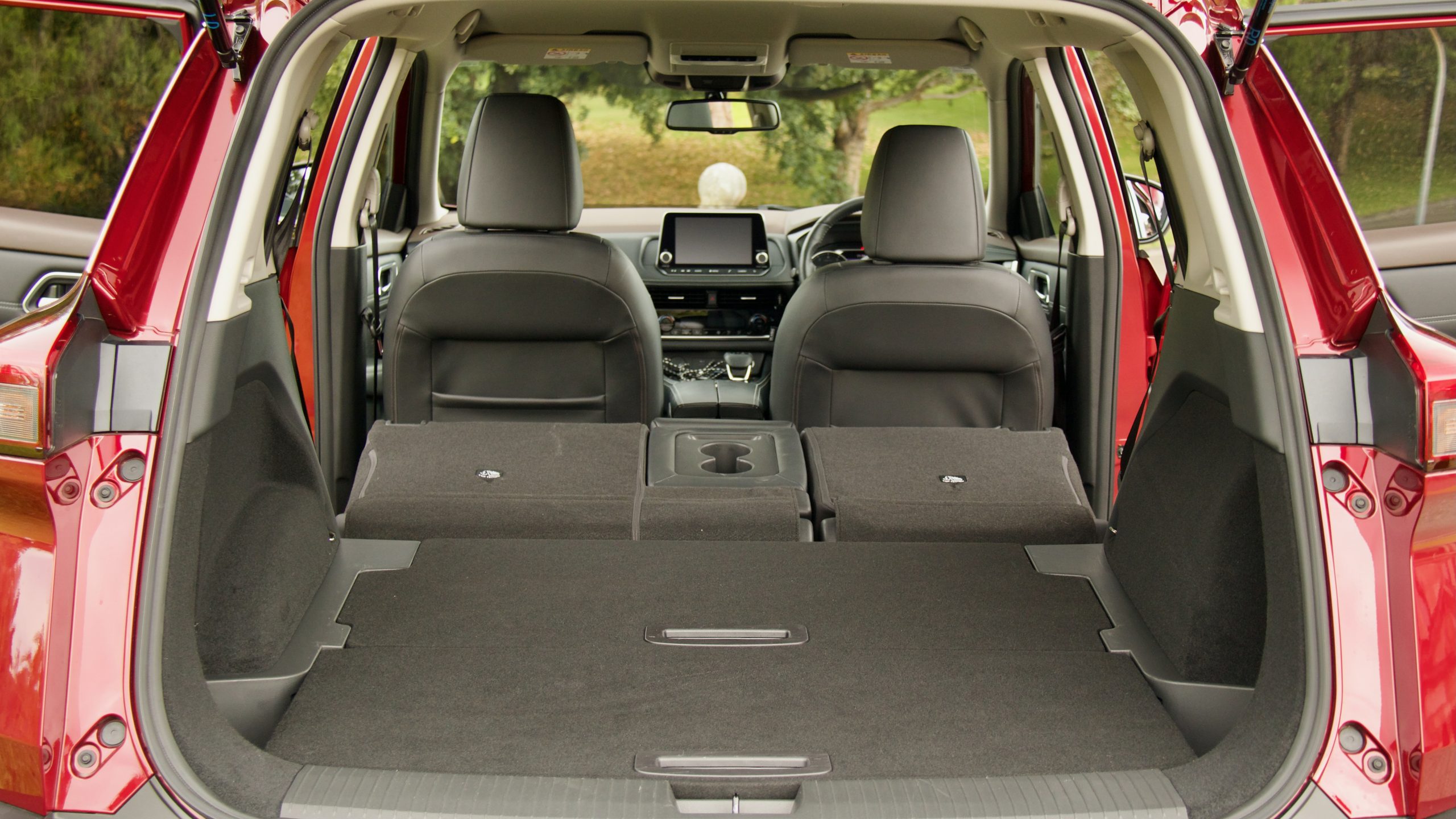
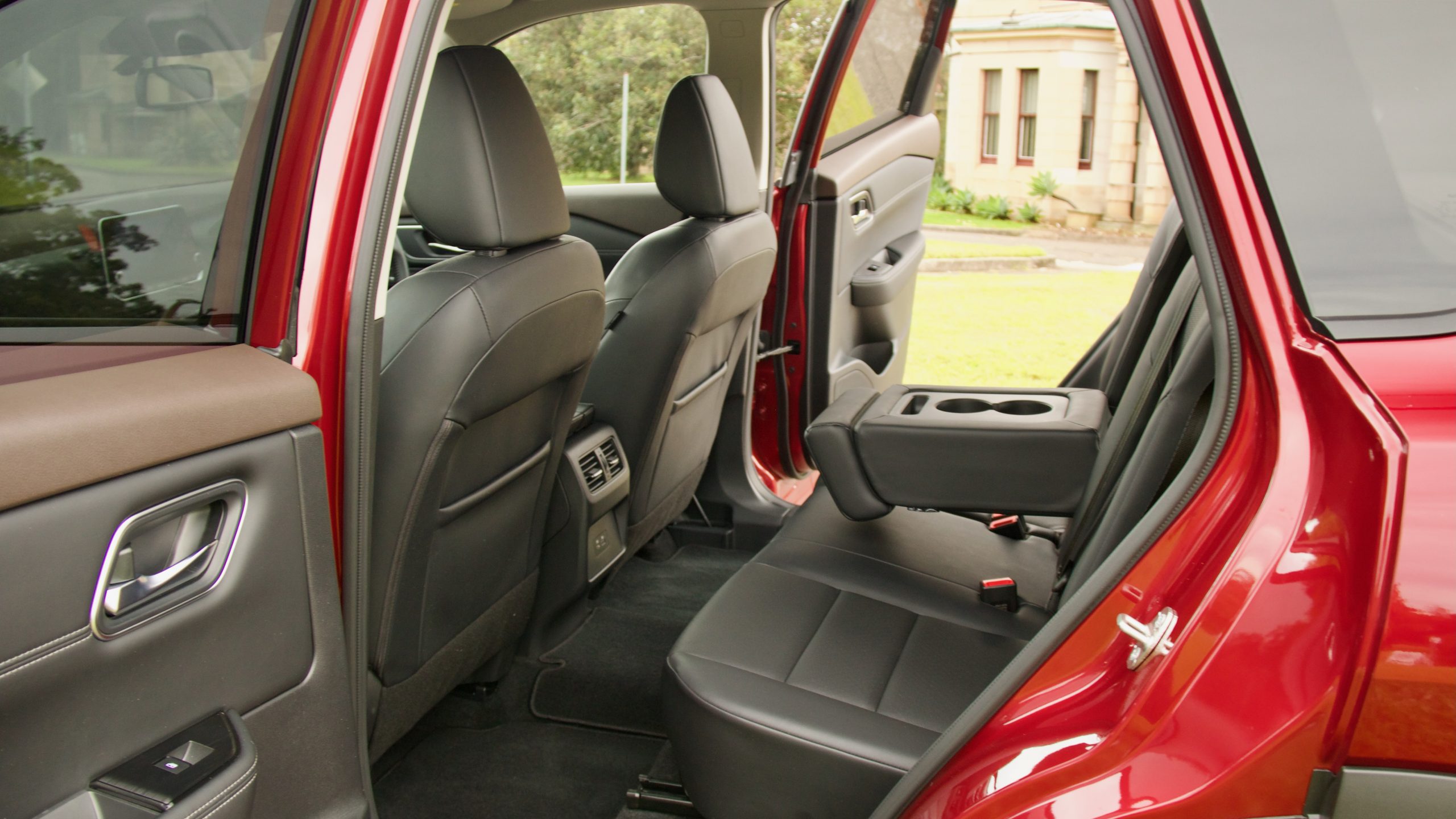
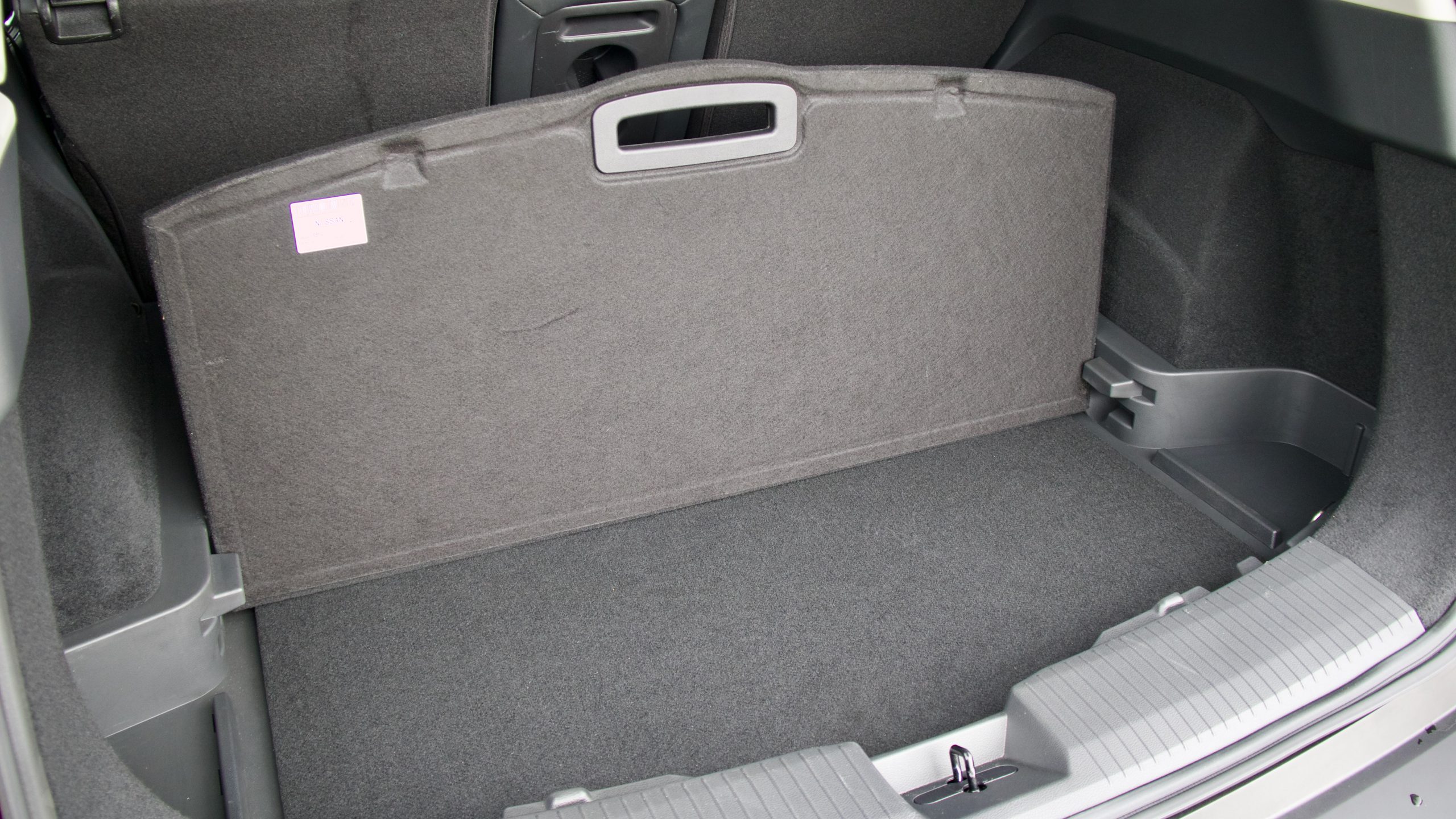
The boot of the X-Trail measures a healthy 585-litres with the seats up (versus 438L for the CX-5 and 539L for the Tucson) and presumably moved forward – Nissan doesn’t quote a figure with the seats folded. The X-Trail has Nissan’s clever ‘Divide-N-Hide’ cargo management system to not damage fragile items and keep luggage separated. Underneath the false floor is more storage, while a space saver spare lies underneath the actual boot floor.
Service & Warranty: 8/10
Like other new Nissan products, the X-Trail is covered by a five-year/unlimited km warranty with five years of roadside assistance. The X-Trail’s service intervals are once-yearly/every 10,000km and five years/50,000km of servicing costs $2,332 ($466 per service).
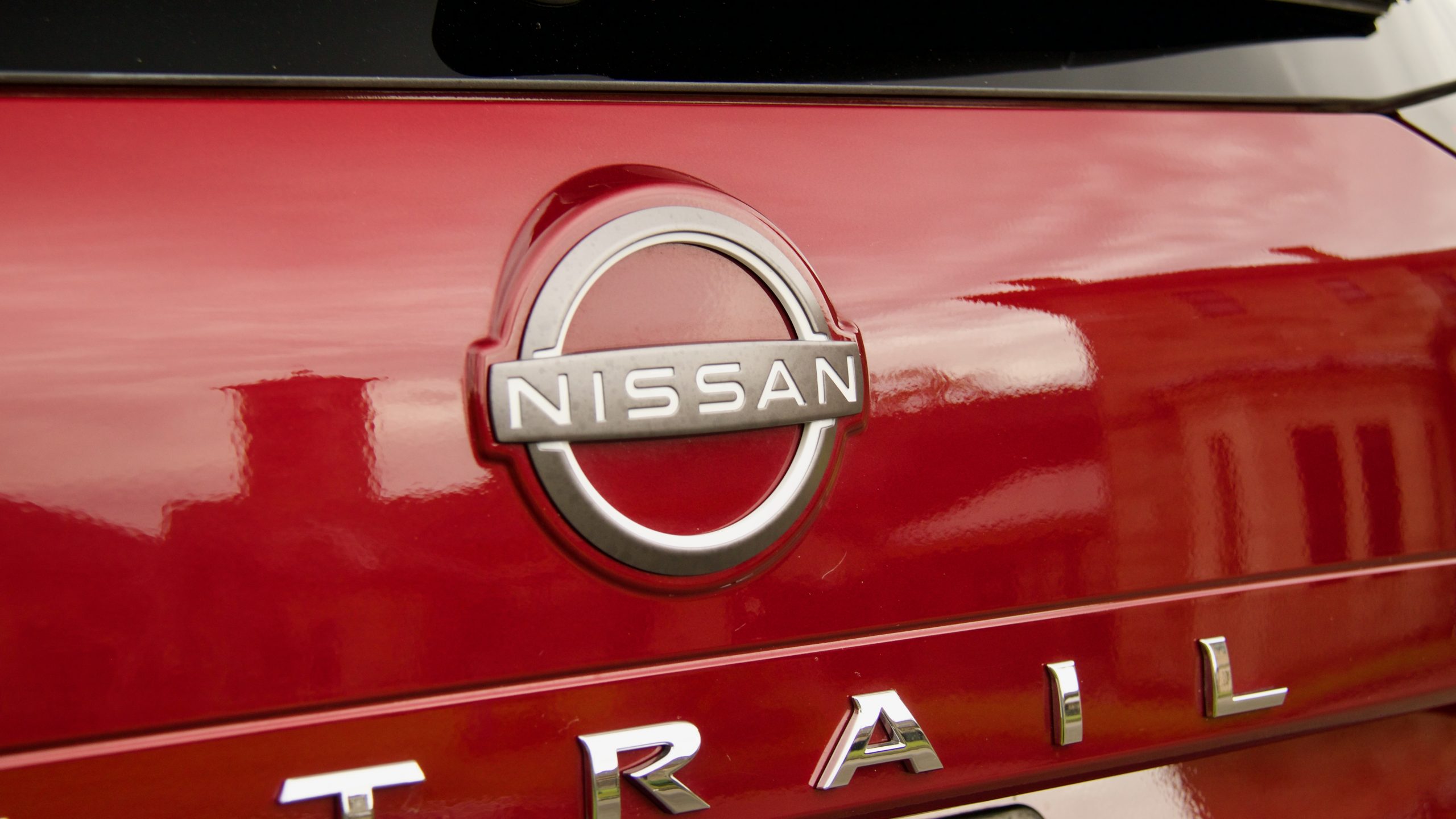
Both Mazda and Hyundai also give their products five-year/unlimited km warranties – Mazda gives you five years of roadside assistance, while Hyundai’s lasts for the life of the vehicle, as long as you service through the brand. Five years/75,000km of servicing the CX-5 costs $2,114 ($422 per service) and the same for the Tucson costs $1,595 ($319 per service) – both of which is better value than the X-Trail thanks to the Mazda’s longer service intervals and the Hyundai’s longer service intervals and lower pricing.
The 2023 Nissan X-Trail ST-L DiscoverAuto Rating: 8.1/10
Like the new-generation Qashqai that we recently tested, the 2023 Nissan X-Trail ST-L is a solid improvement on the car it replaces thanks to its overhauled interior, added standard equipment, handsome new styling, pleasant driving dynamics and excellent practicality. If you’re after a mid-size SUV that doubles as a great family car, we think the X-Trail presents a great case for itself.

It’s not as engaging to drive as a CX-5, however, and its carryover drivetrain is not exciting either. The ST-L could also do with more equipment like a larger centre screen and automatic wipers. But overall, the X-Trail will do quite well down under for sales thanks to its long list of attributes – plus, it has a hybrid option available as well, and stock is reportedly reasonable too. If you’re after a mid-size SUV, the Nissan X-Trail really should be on your test drive list.
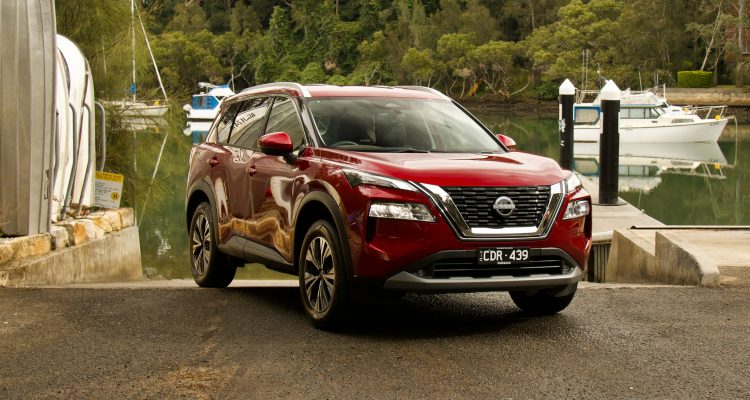
Thanks Jake, will add this onto our test drive list for the new car!